Some make their cornerstone from the tombstone of others.
Hello travellers,
I am a Traveller, and in the next twelve minutes or so it will take you to go through my post, I will be your guide.
Today we stop in the Forbidden Quarter, as the SPRING area was known during the communist period, on the avenue of the same name, at number 50, is "objective P50", a name also used during the old regime.
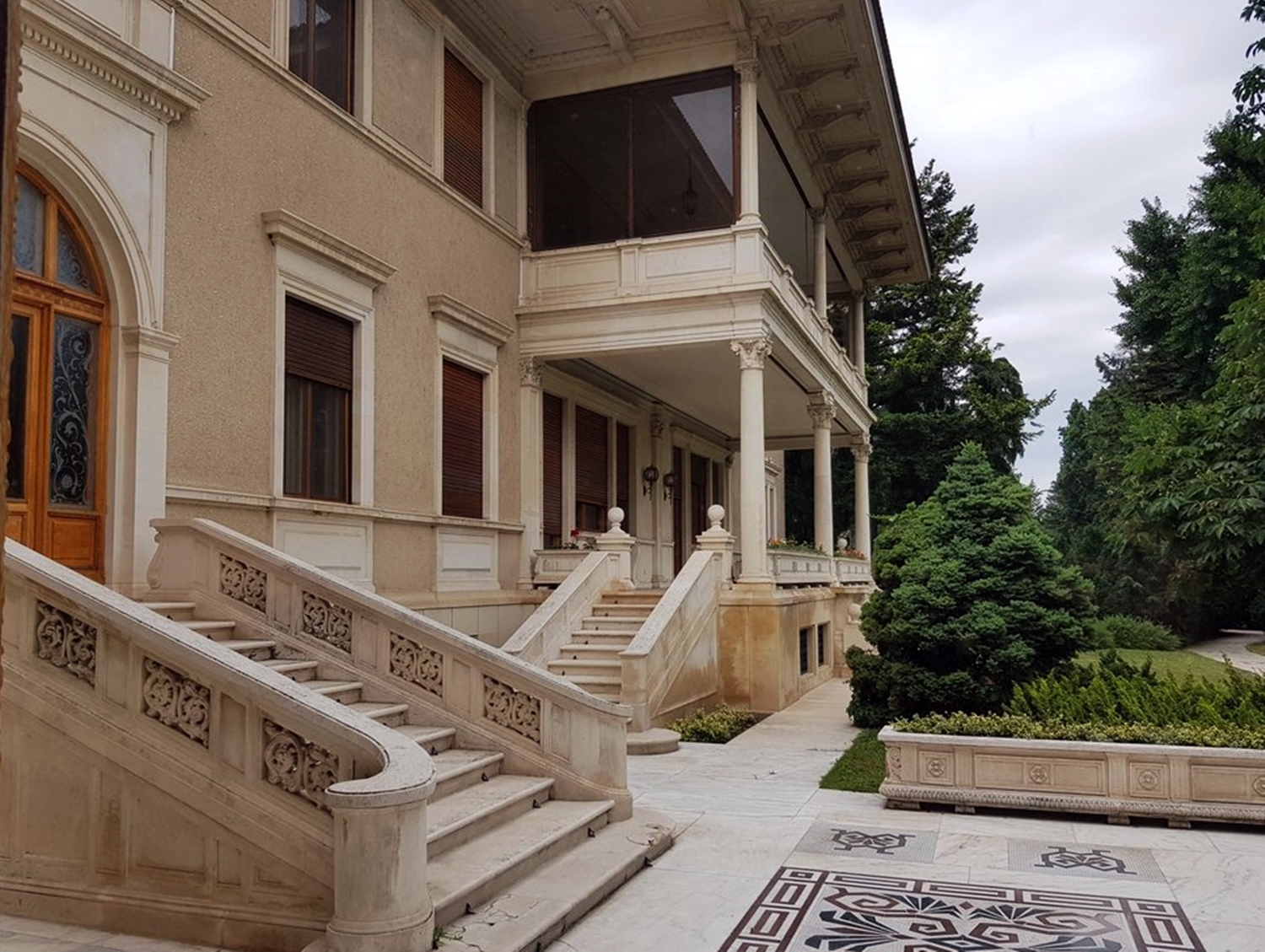
One weekend we visited Casa Ceaușescu, also called Spring Palace, the villa where the Ceaușescu family lived in Bucharest.
We are in the Spring Palace. The building was completed between 1964 and 1965, becoming the private residence of Nicolae and Elena Ceaușescu (dictators of the communist regime).
He was Secretary General of the Romanian Communist Party, Head of State of the Socialist Republic of Romania from 1967 until the end of communism with the December 1989 revolution.
In this picture we can see the Ceausescu couple.
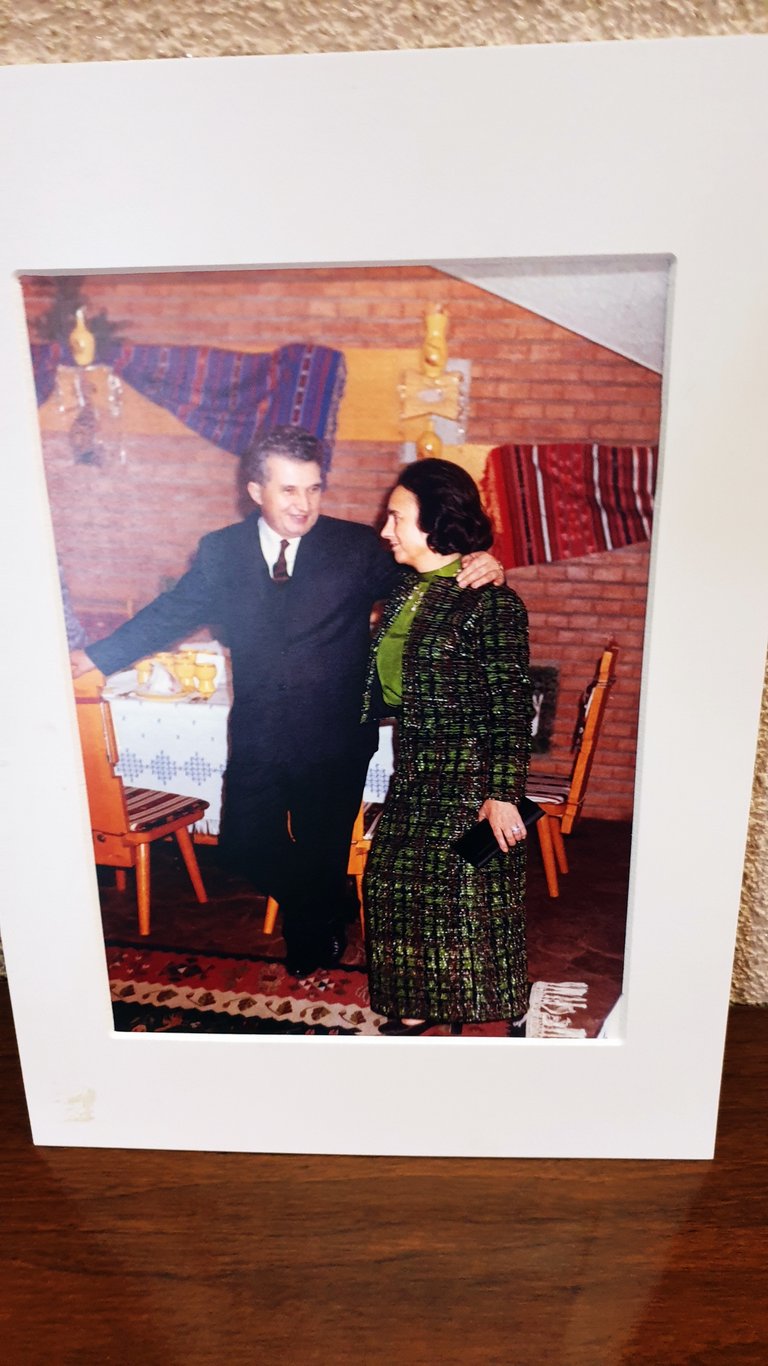
One of the entrances leading to the palace.
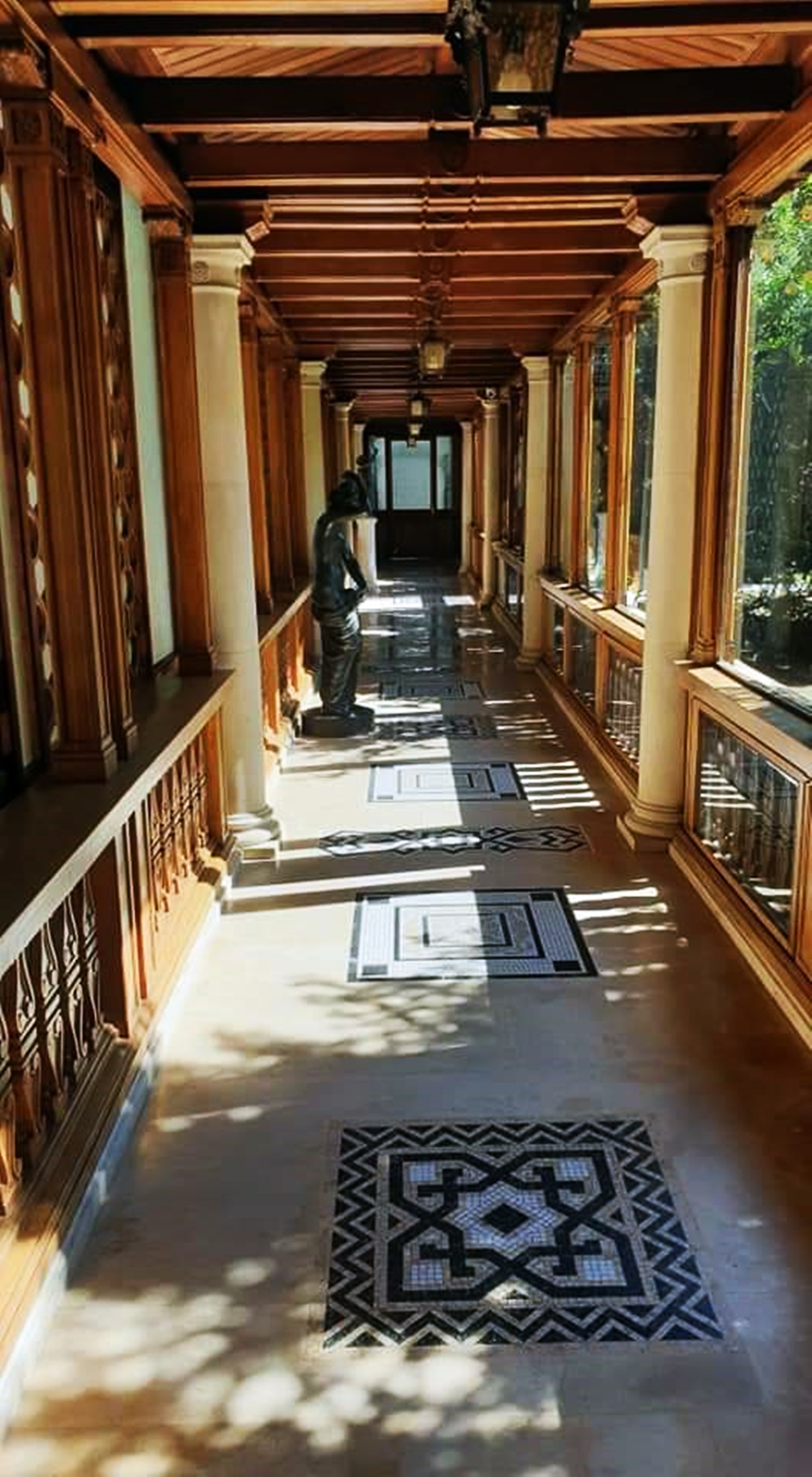
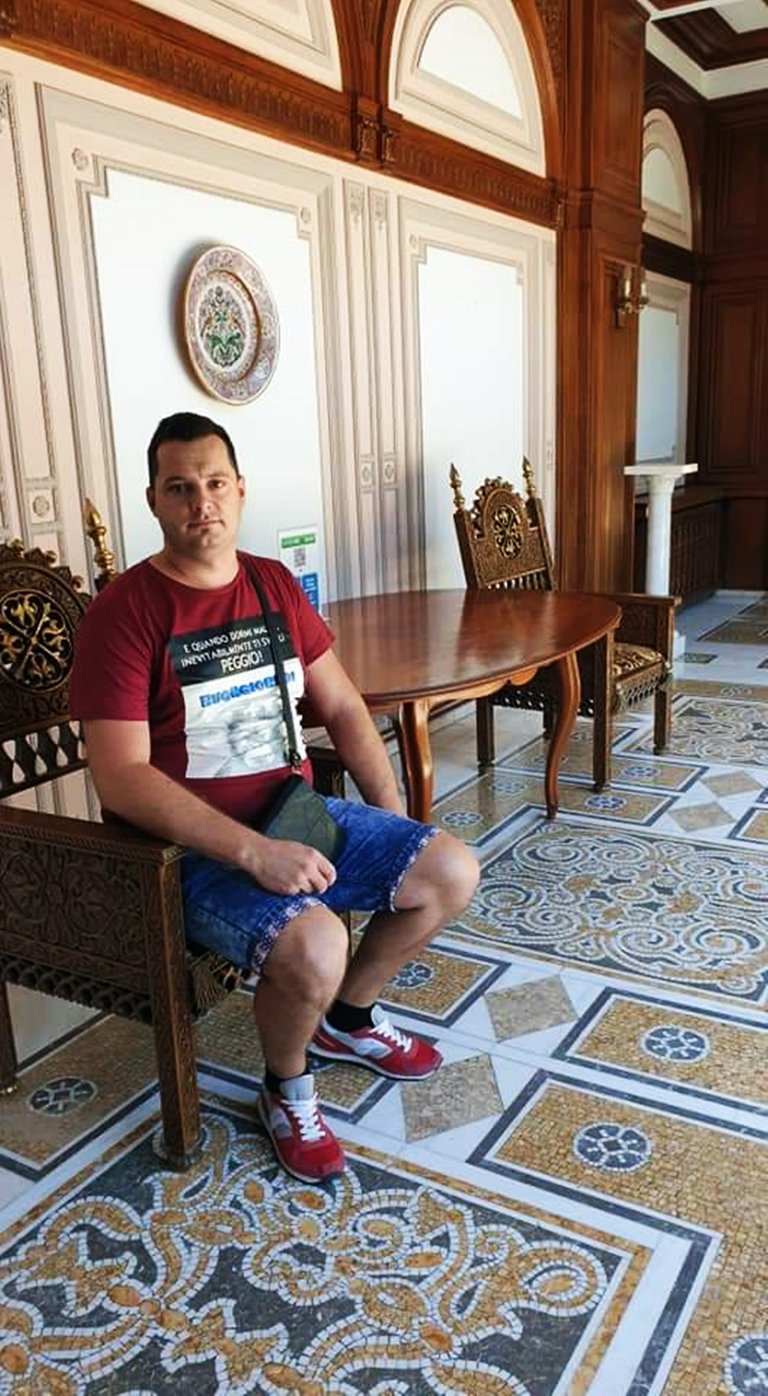
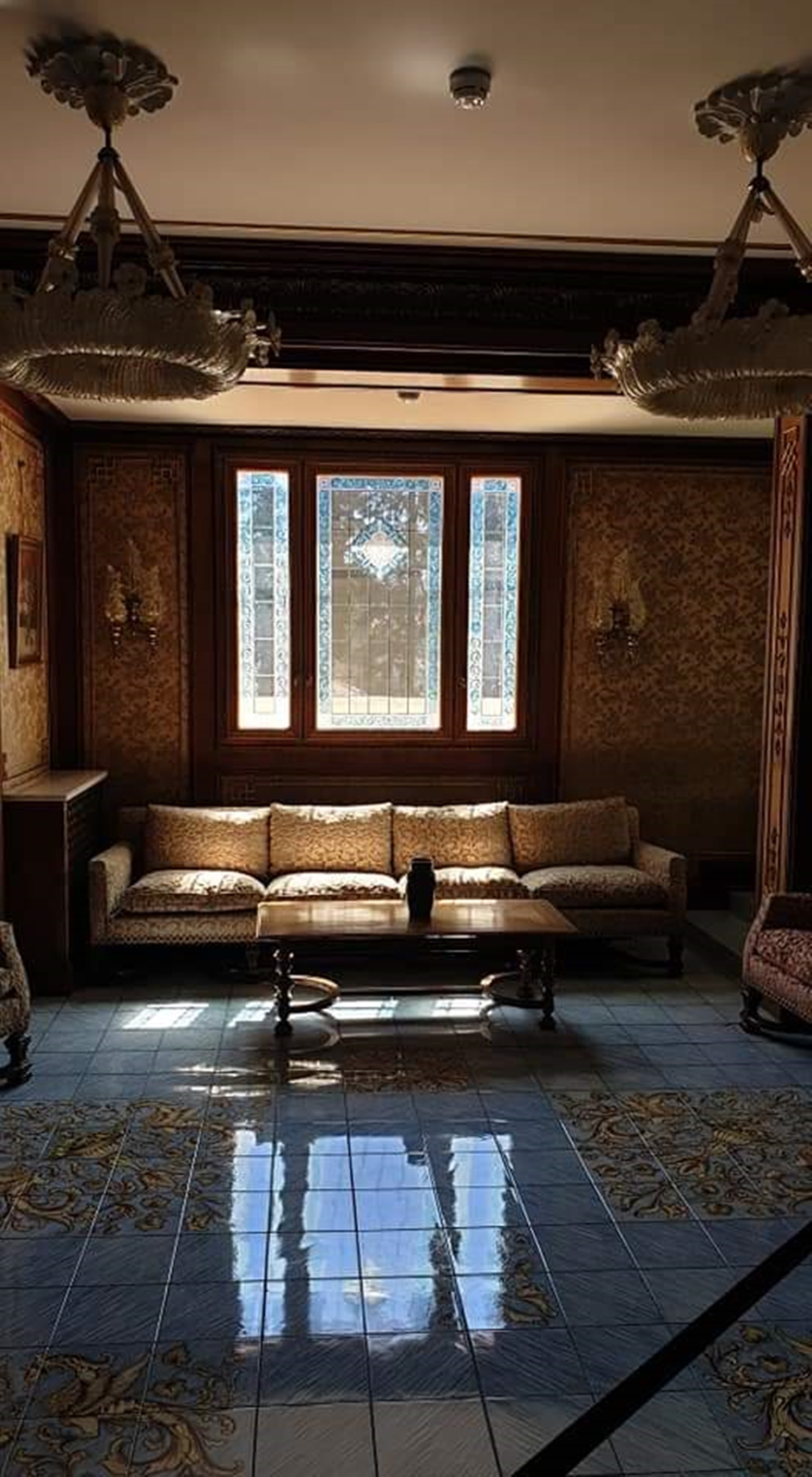
Moreover, Ceaușescu also became Romania's first president, starting in 1974 - the decision was taken after several meetings with other heads of state who held this title.
The architect Aron Grimberg-Solari was chosen for the construction of this palace instead of the favourite of the time, Cezar Lăzărescu. Architectural additions were made by Robert Woll, who also left his signature on much of the interior furniture design, and by landscape architect Teodosiu. The refurbishment was completed in the 1980s, after Elena Ceaușescu, the dictator's wife, had left her mark.
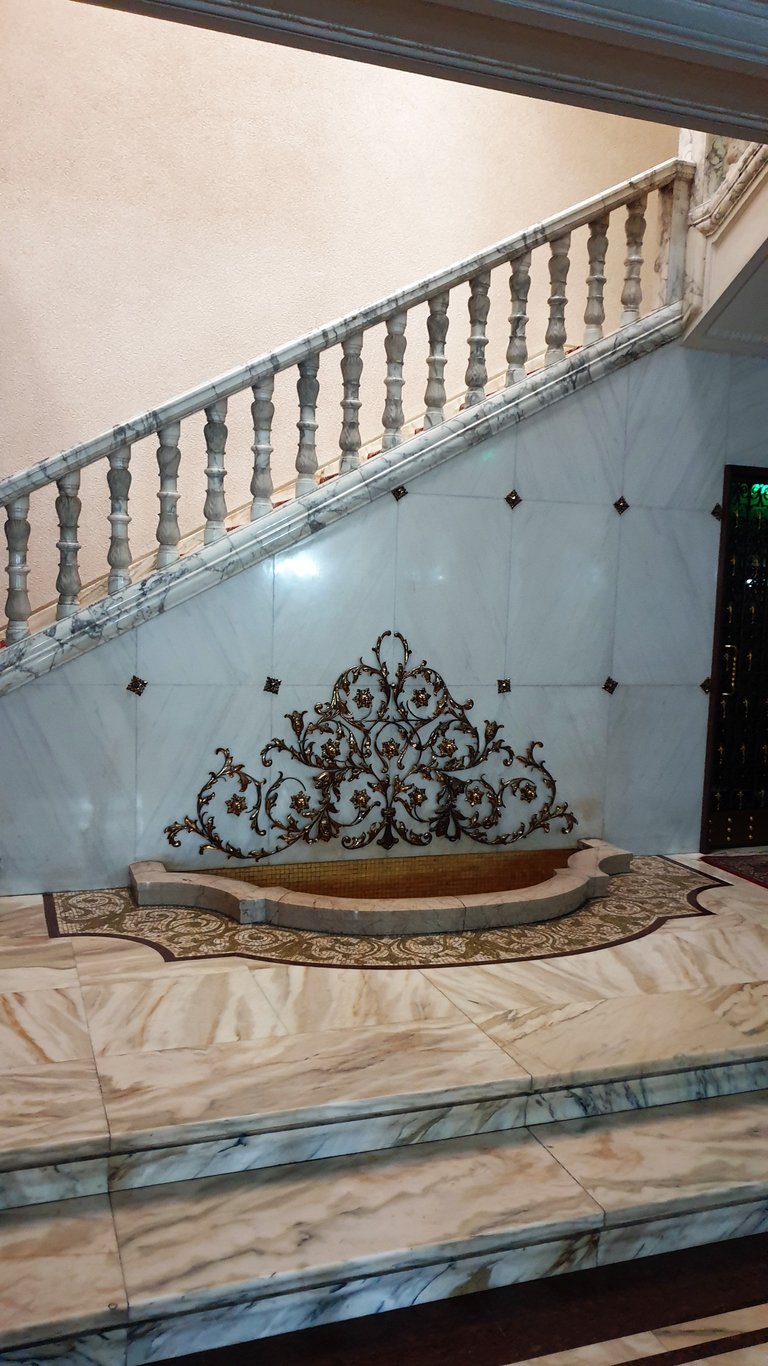
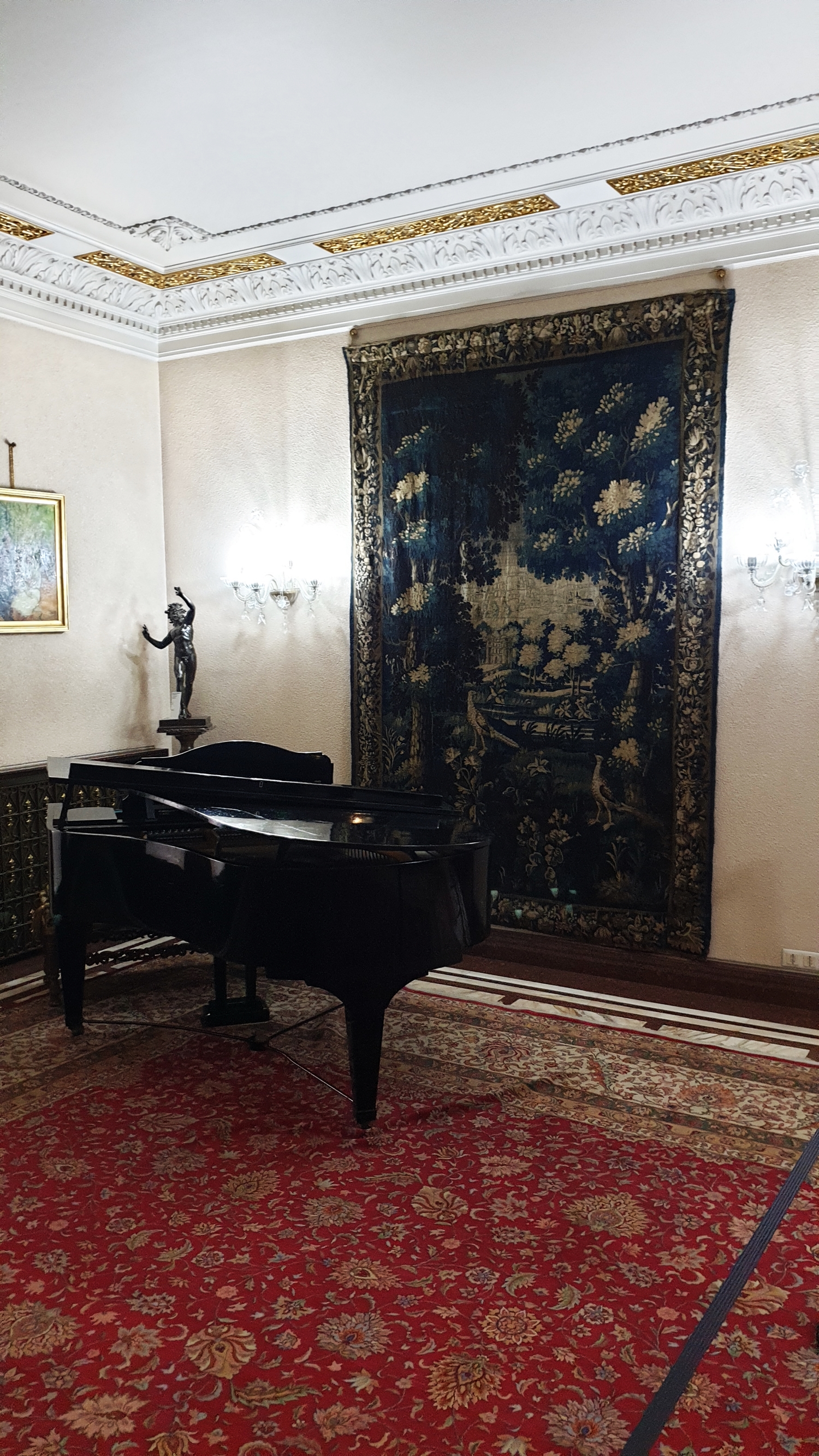
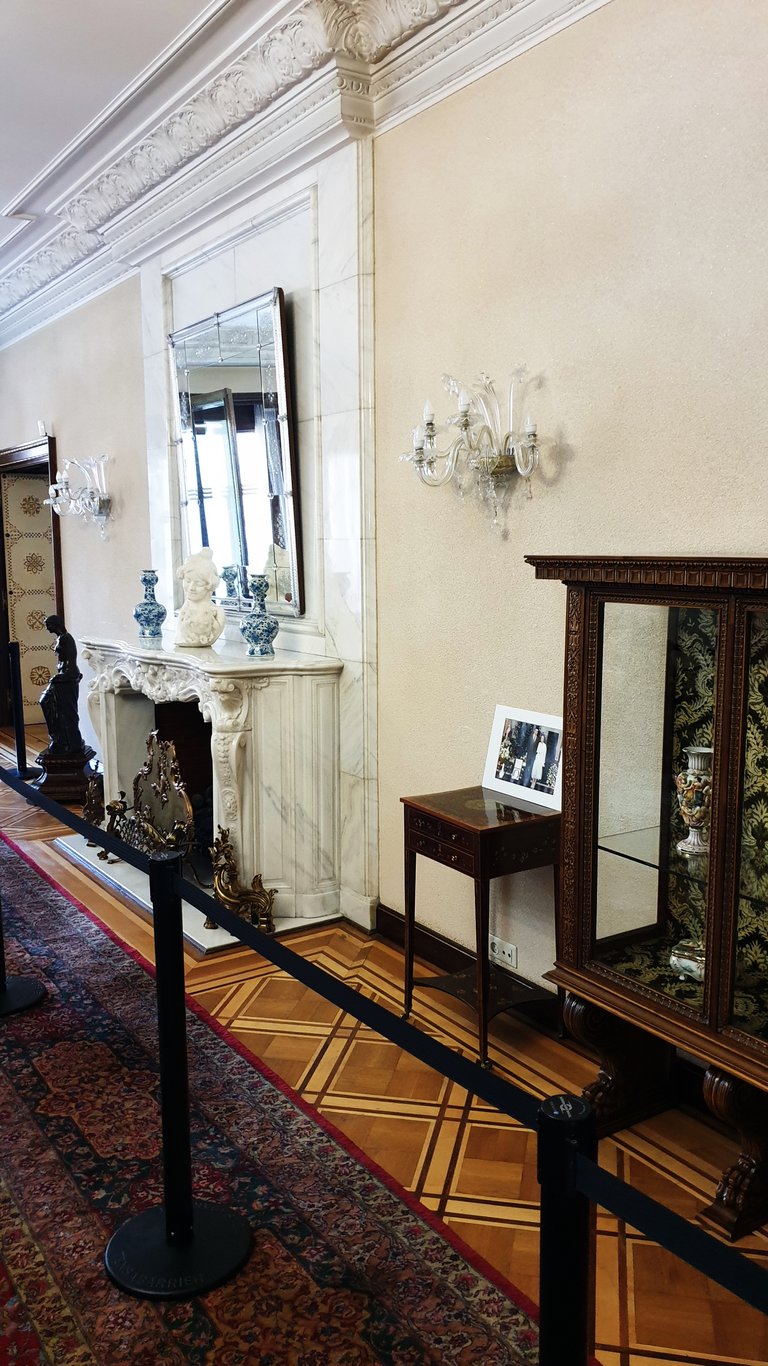
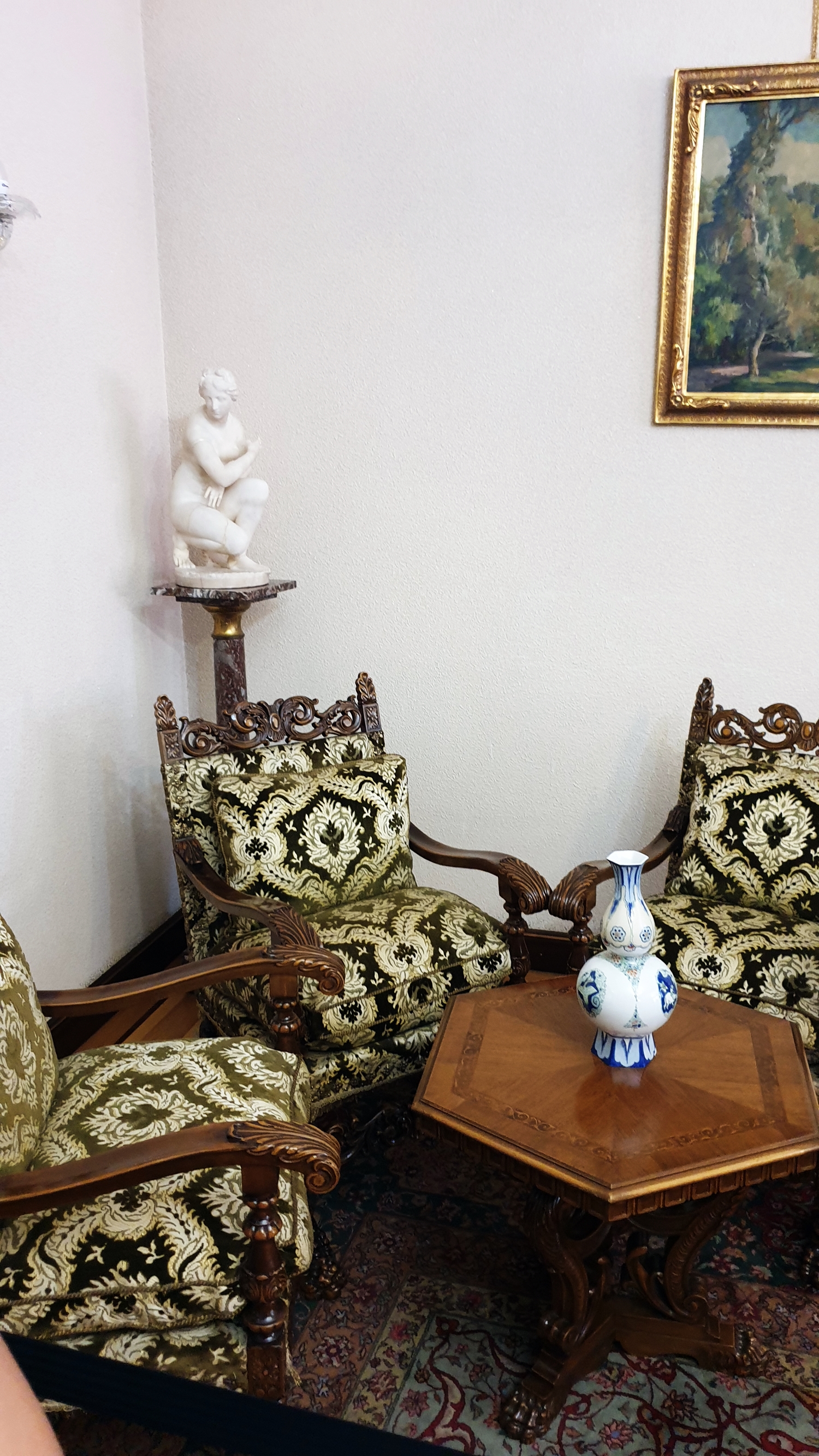

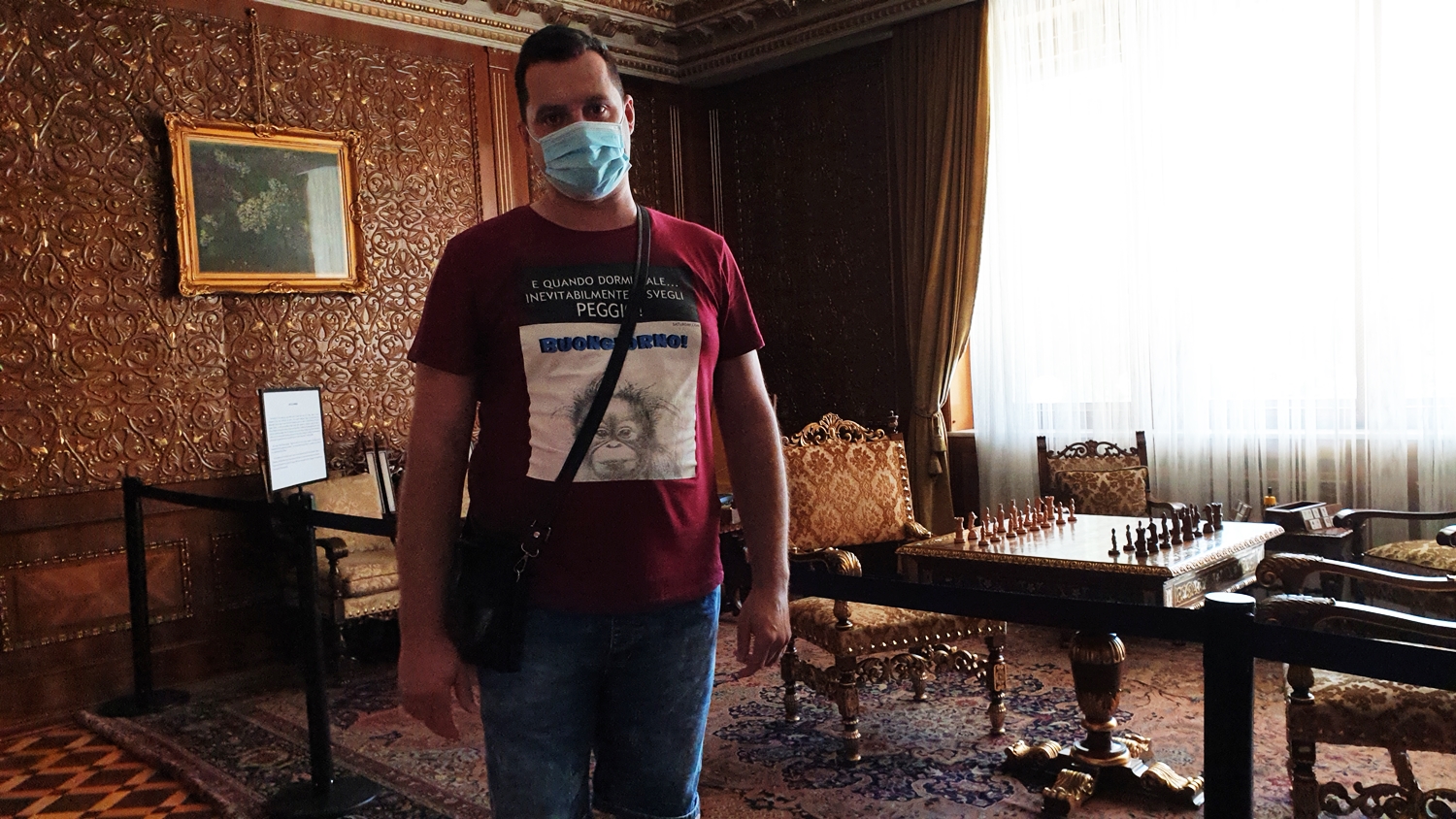
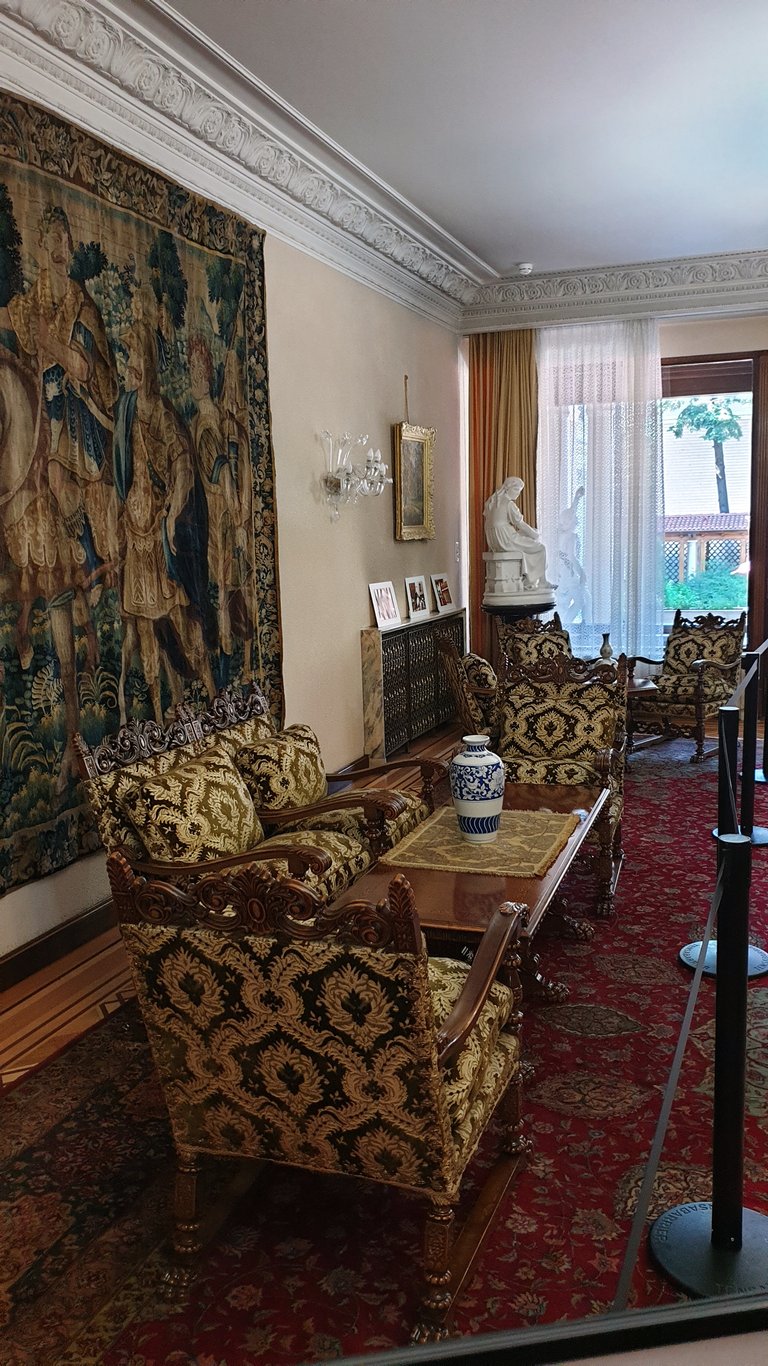
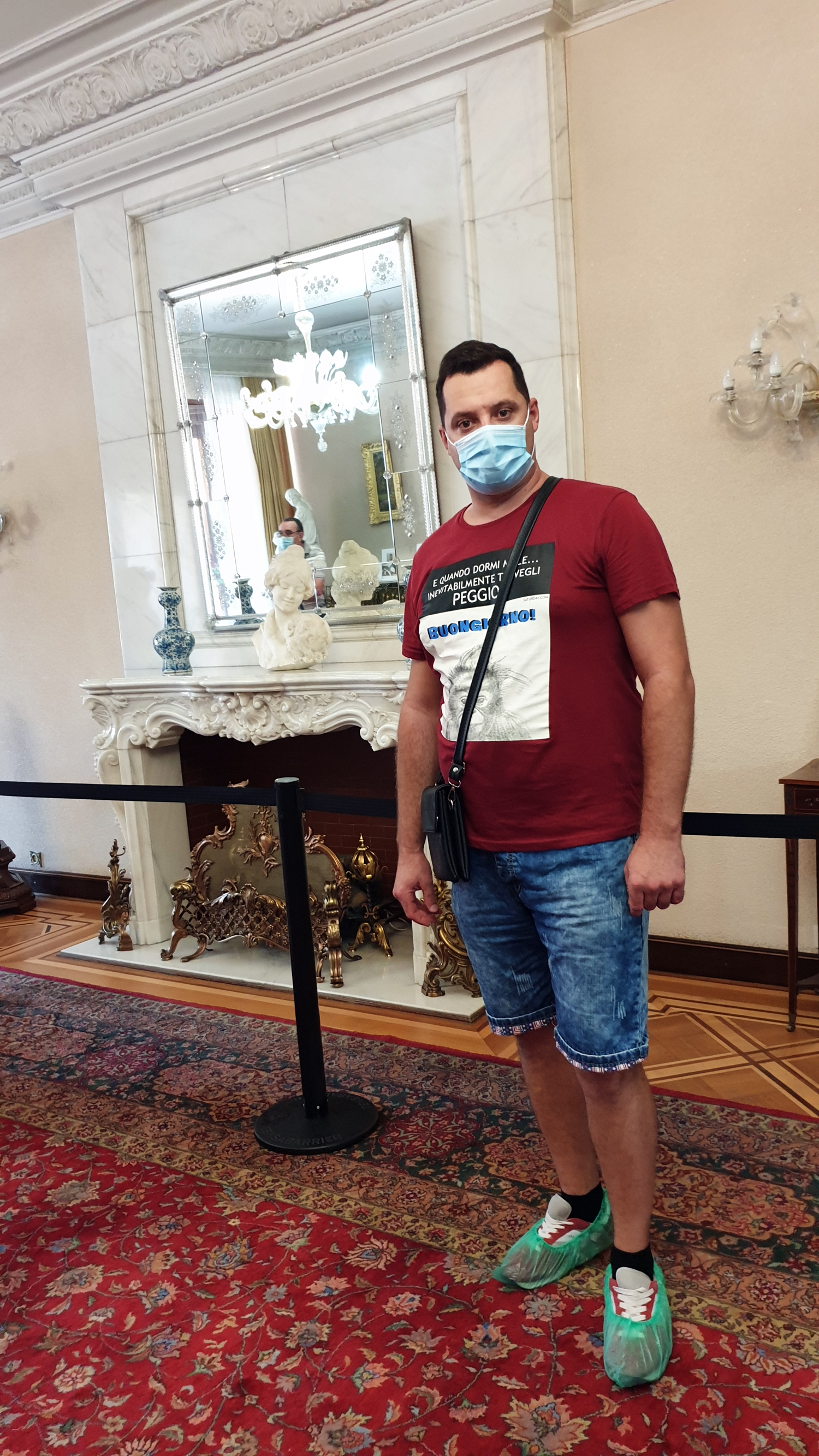
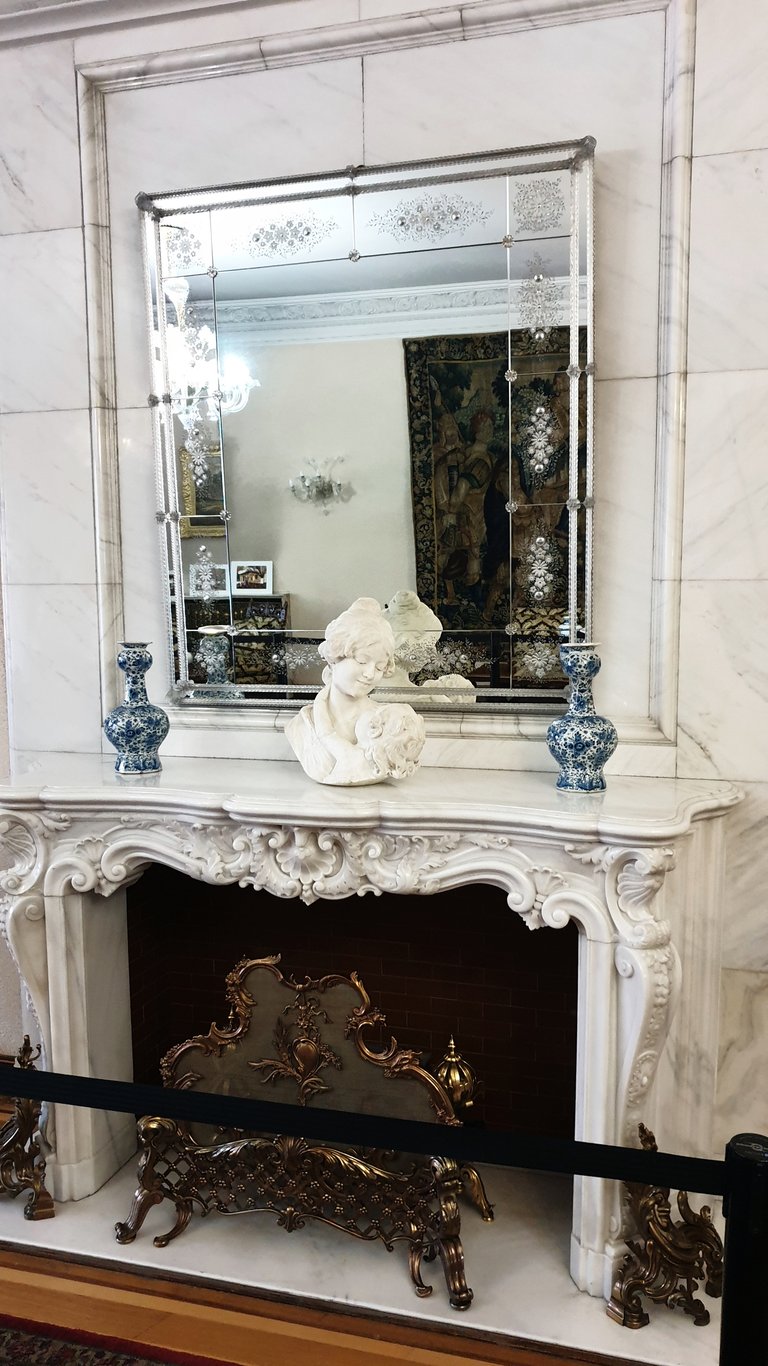
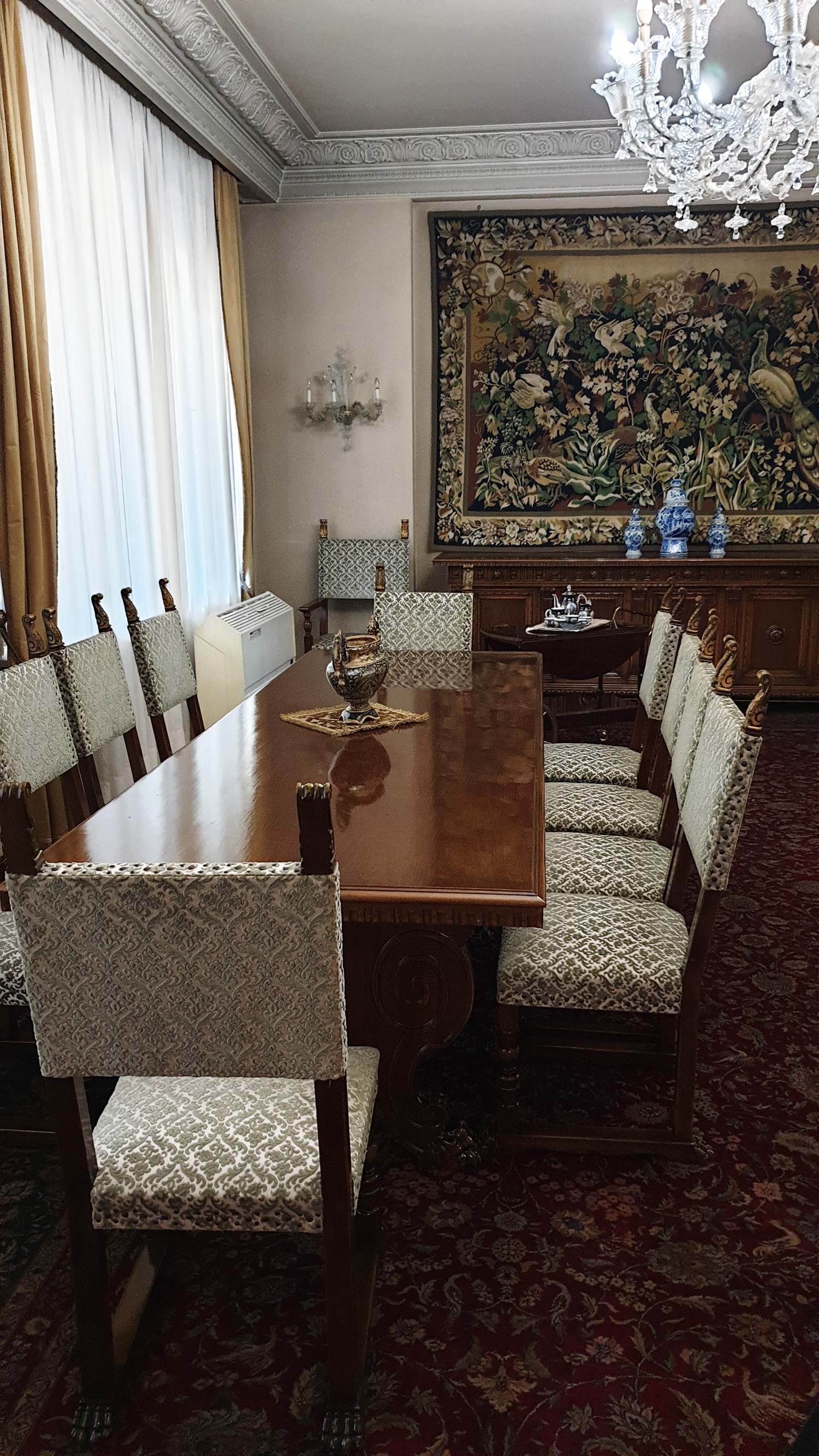
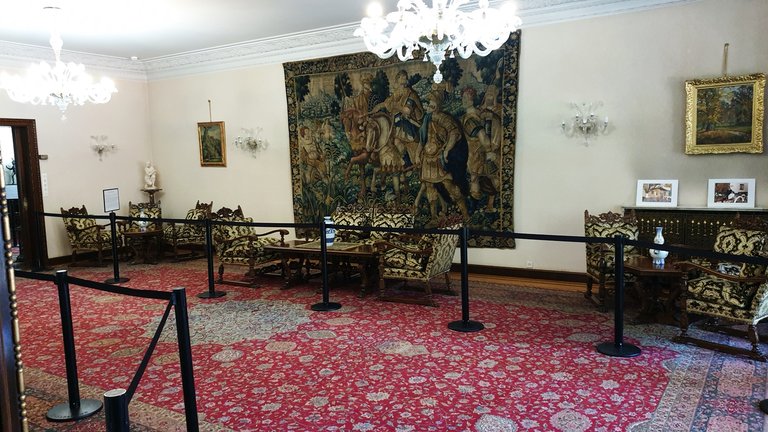
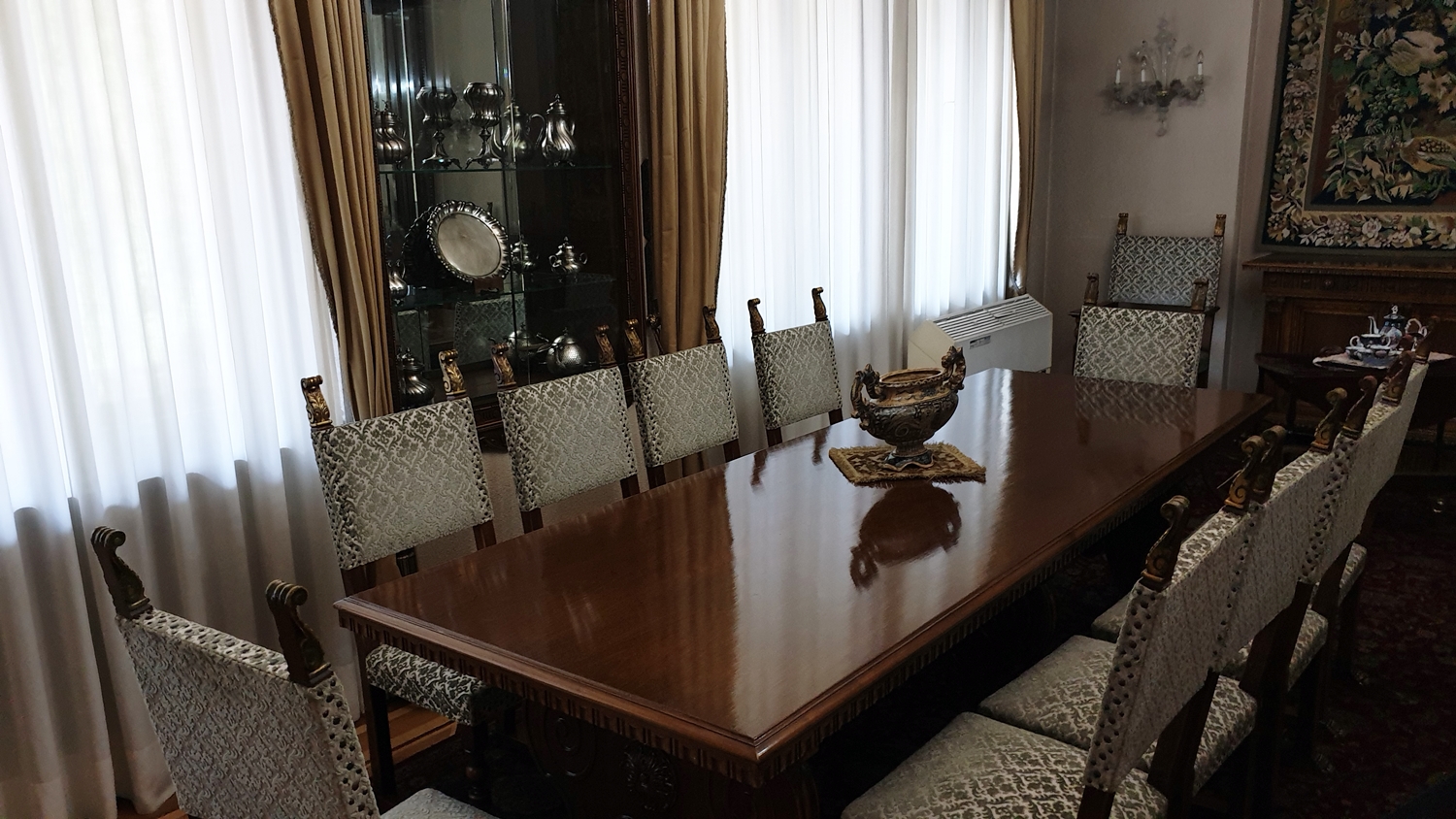
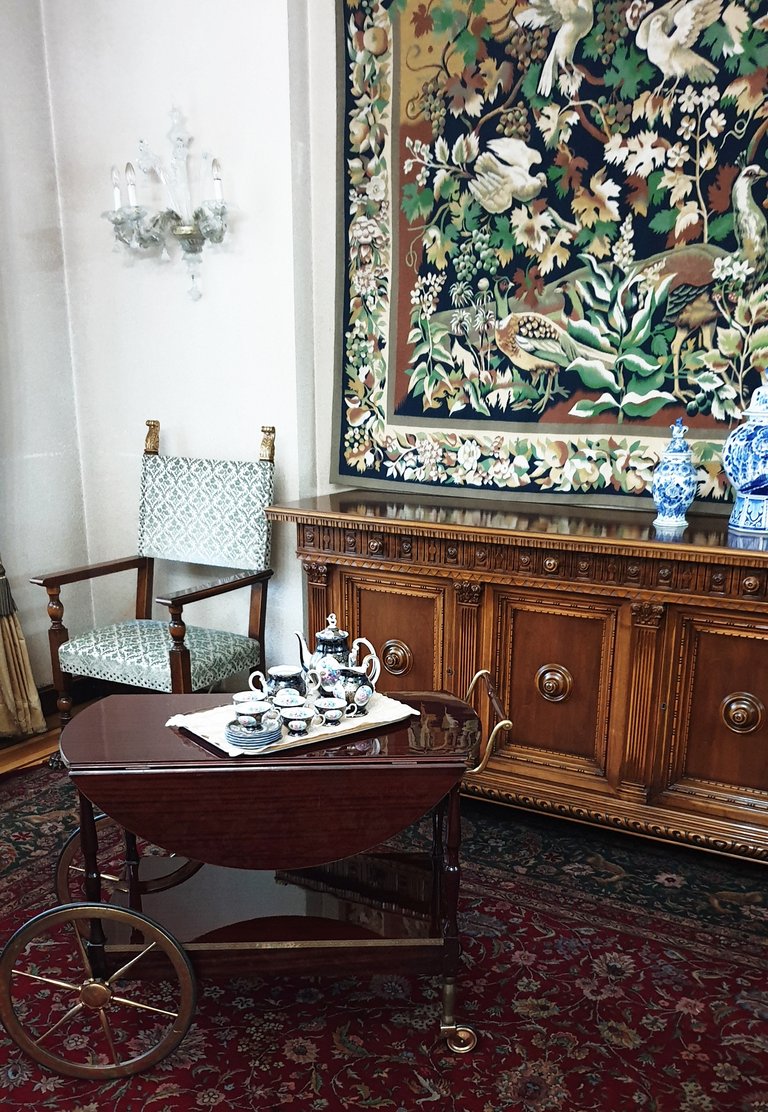
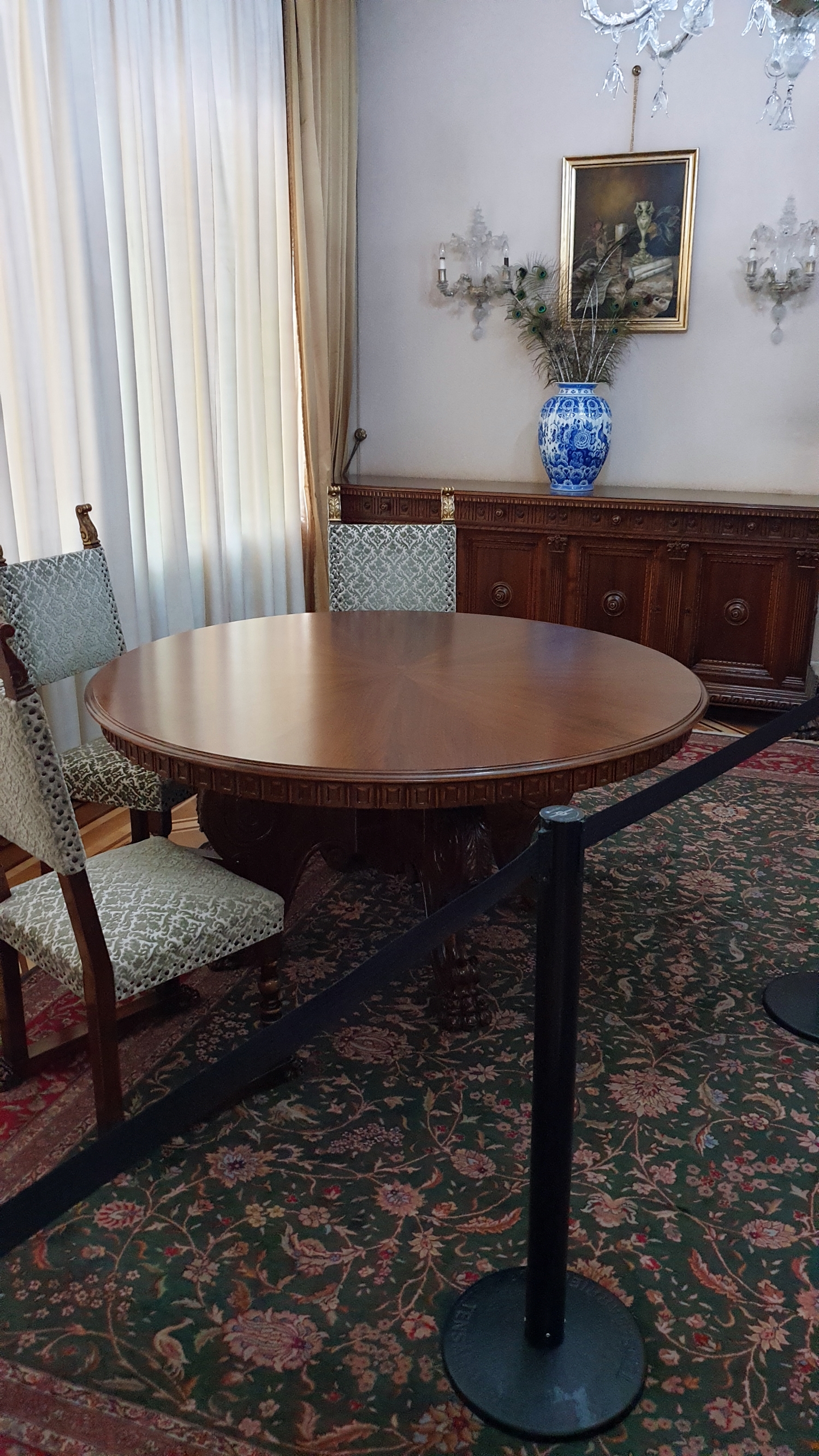
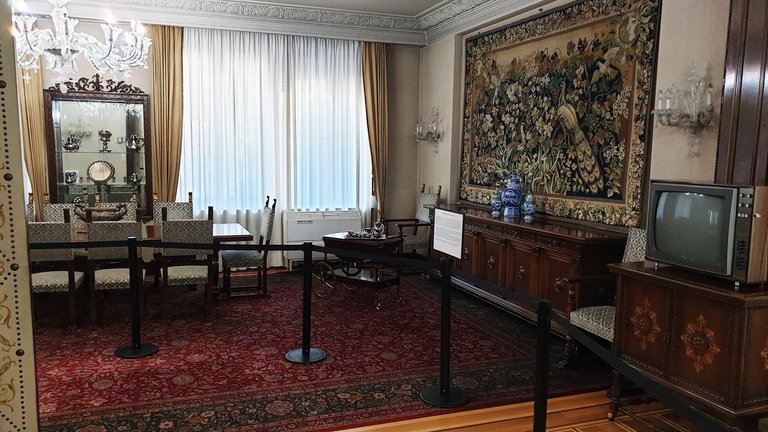
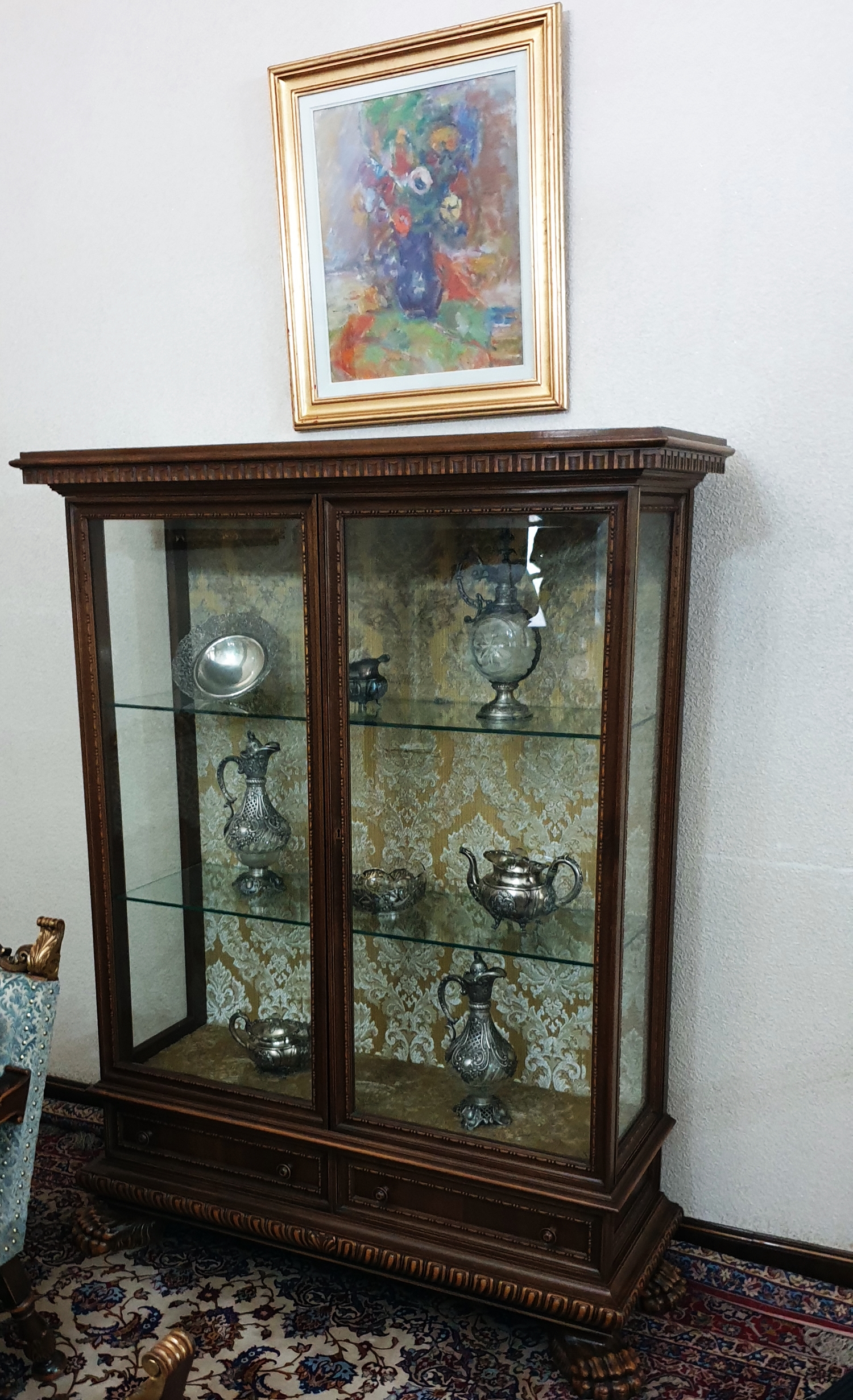
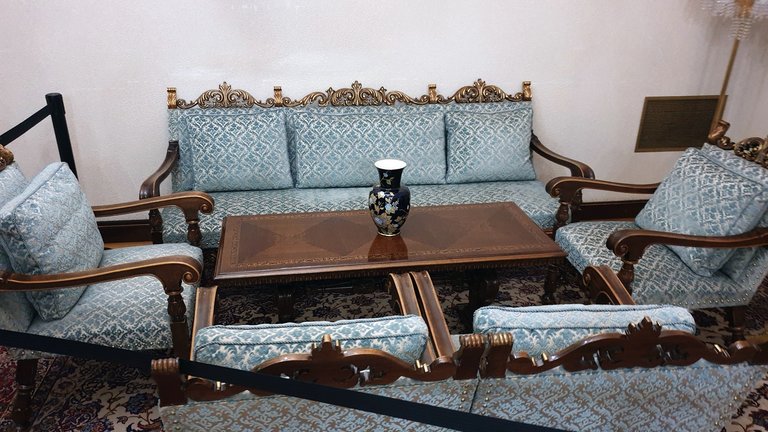
The building was designed from the beginning to be the family residence of the communist leader. Thus, with one exception, no official meetings were held in this building. Each member of the family owned an apartment here.
The 80 rooms house only heirlooms; nothing was owned by the couple, not even their clothes. 80% of everything in the Spring Palace was made in Romania: the furniture, mostly walnut, was carved in Renaissance style at the Helliade factory, the crystals are from Dej, the paintings, painted by Romanian artists, were transferred from the National Museum, and the curtains are from Pascani.
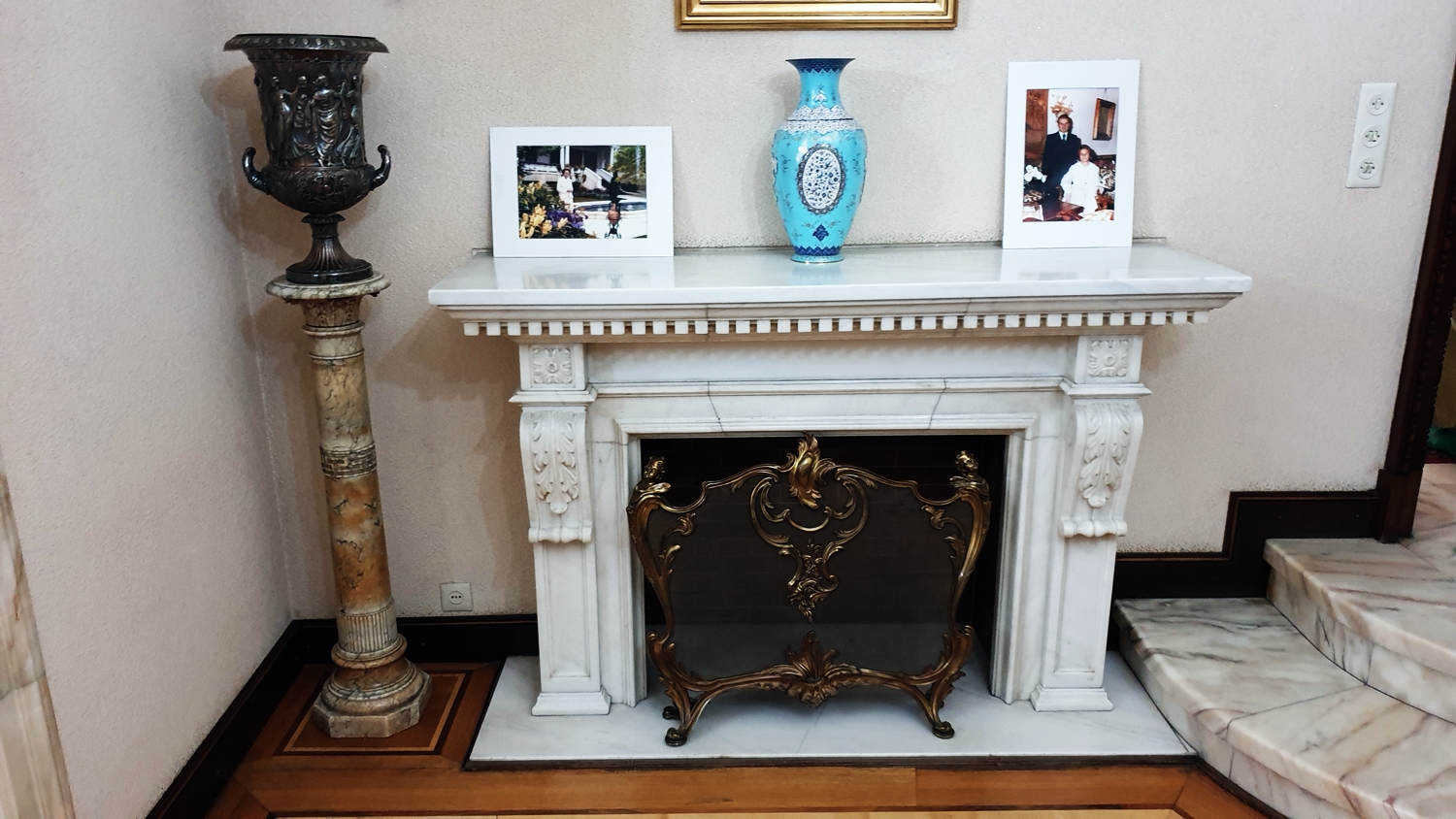
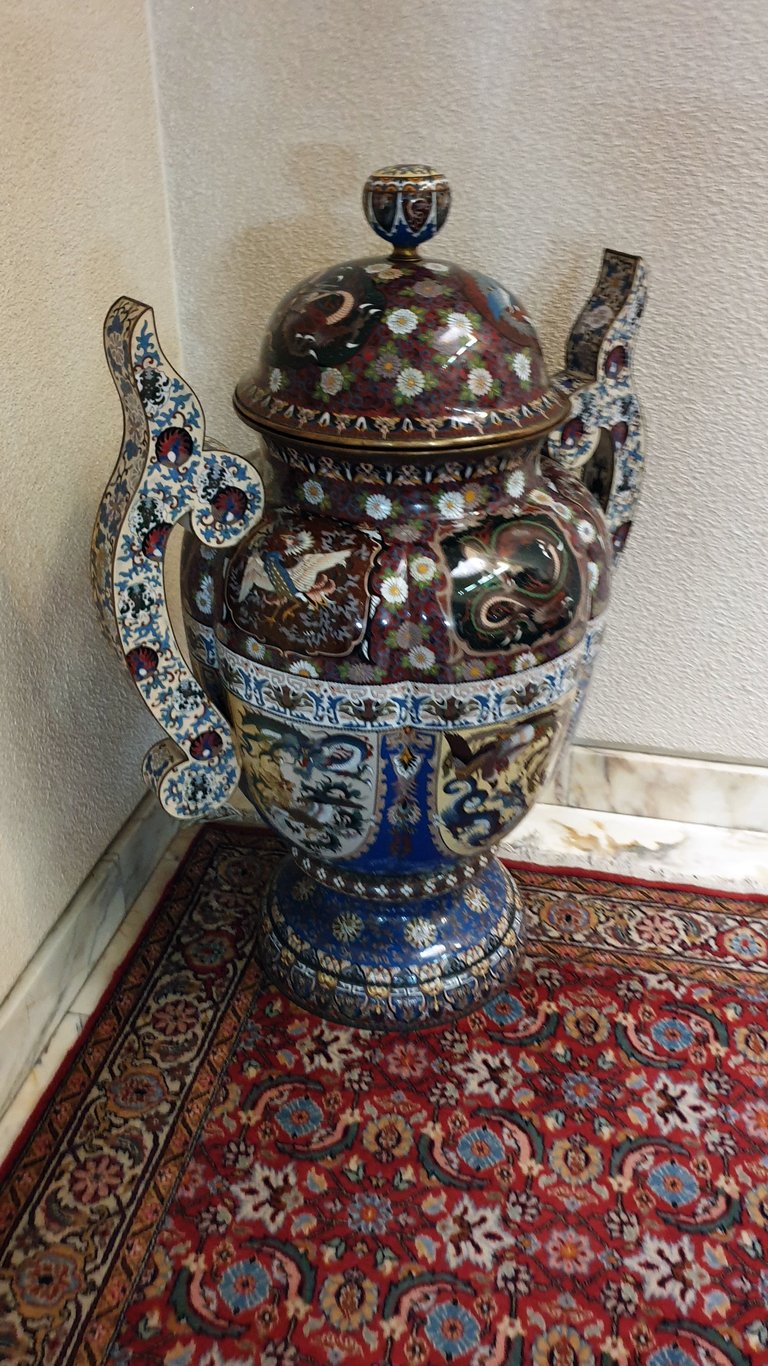

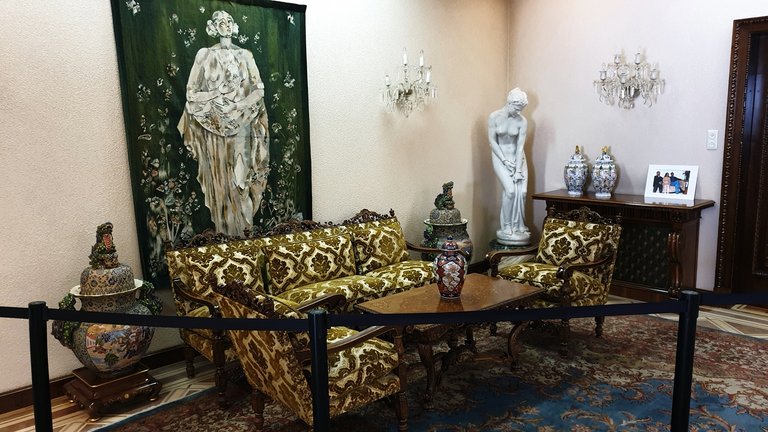
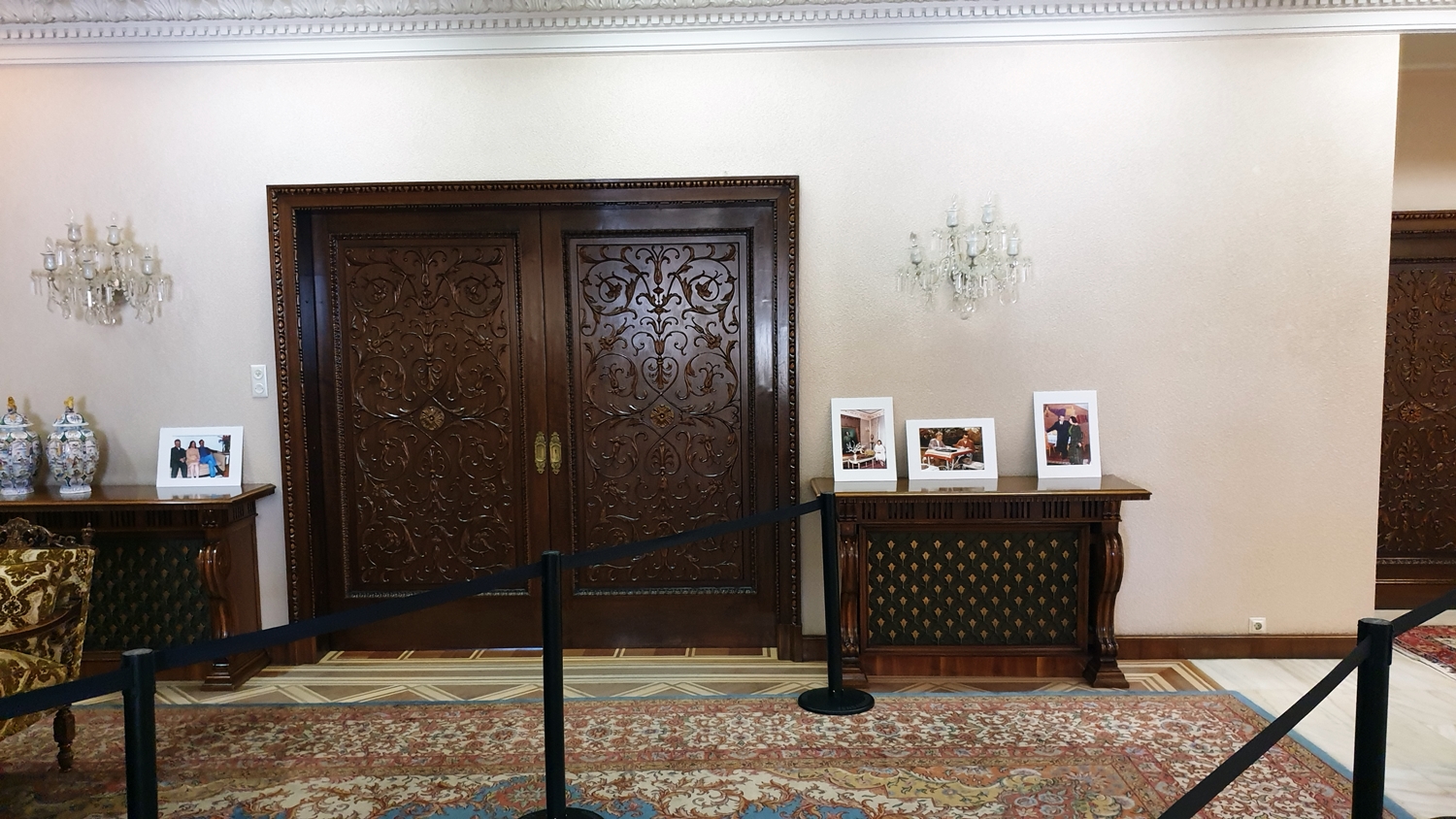
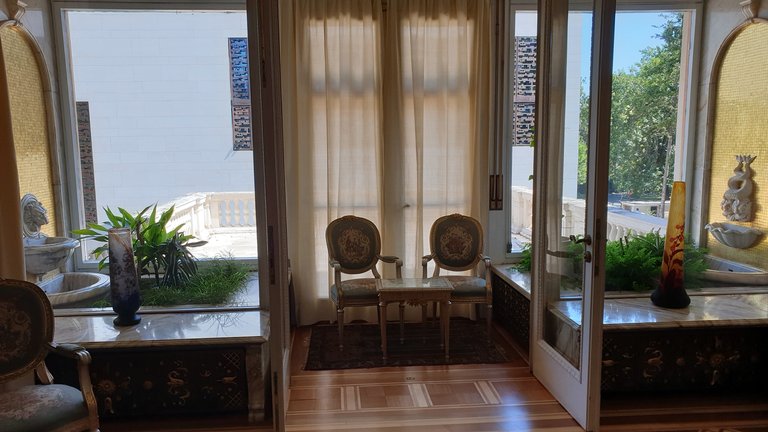
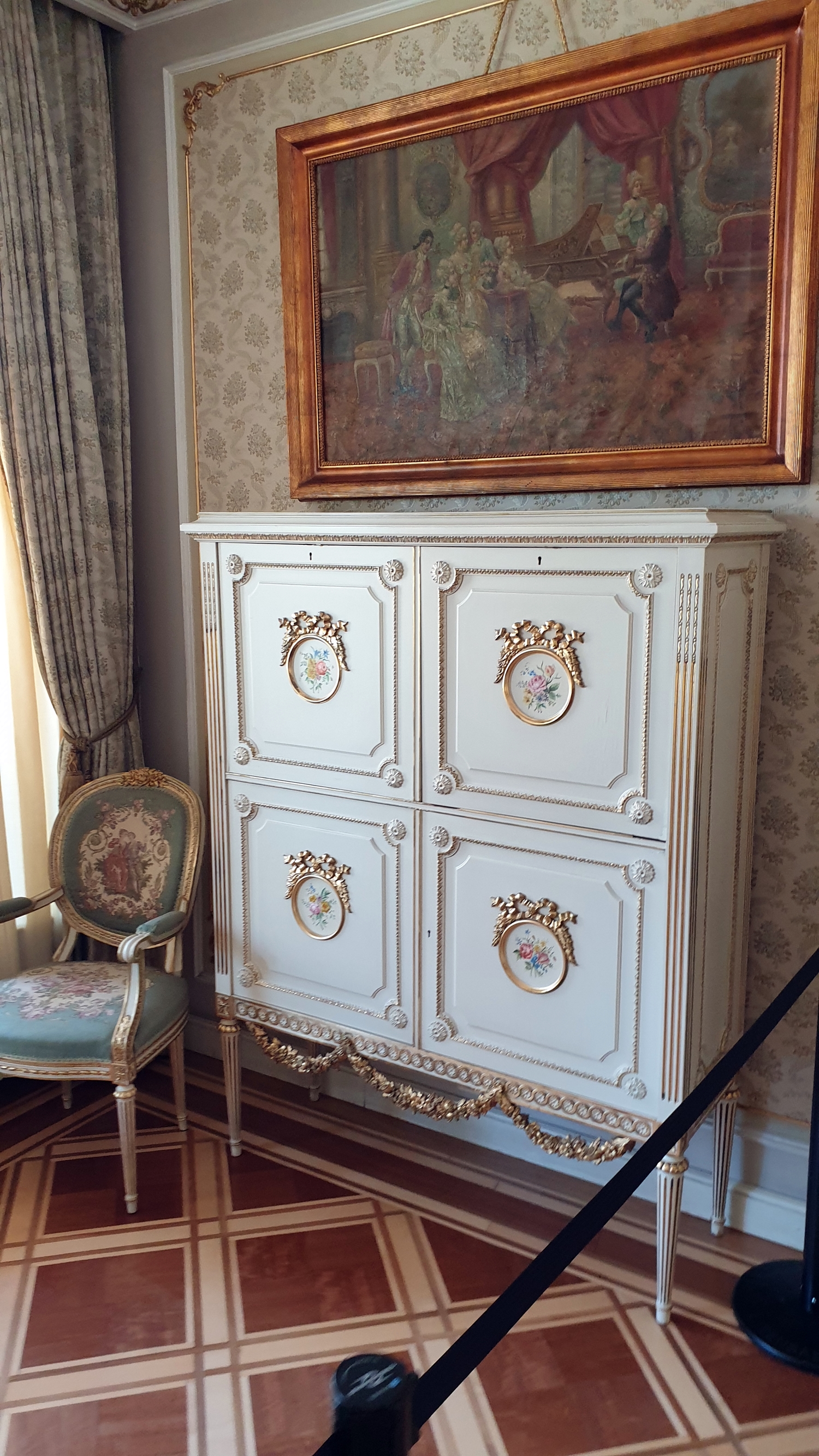
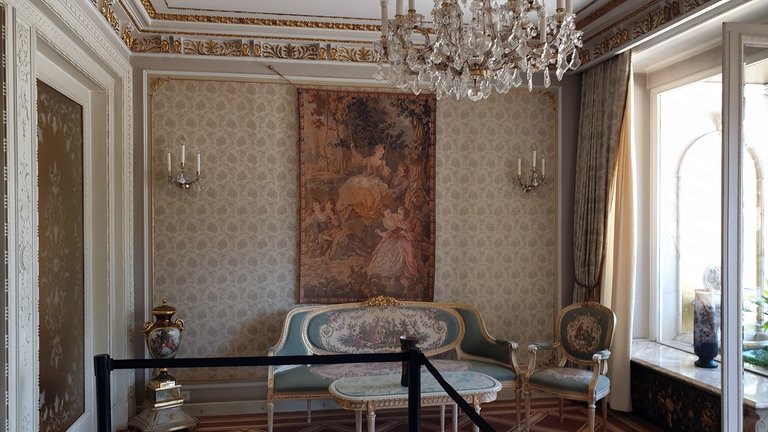
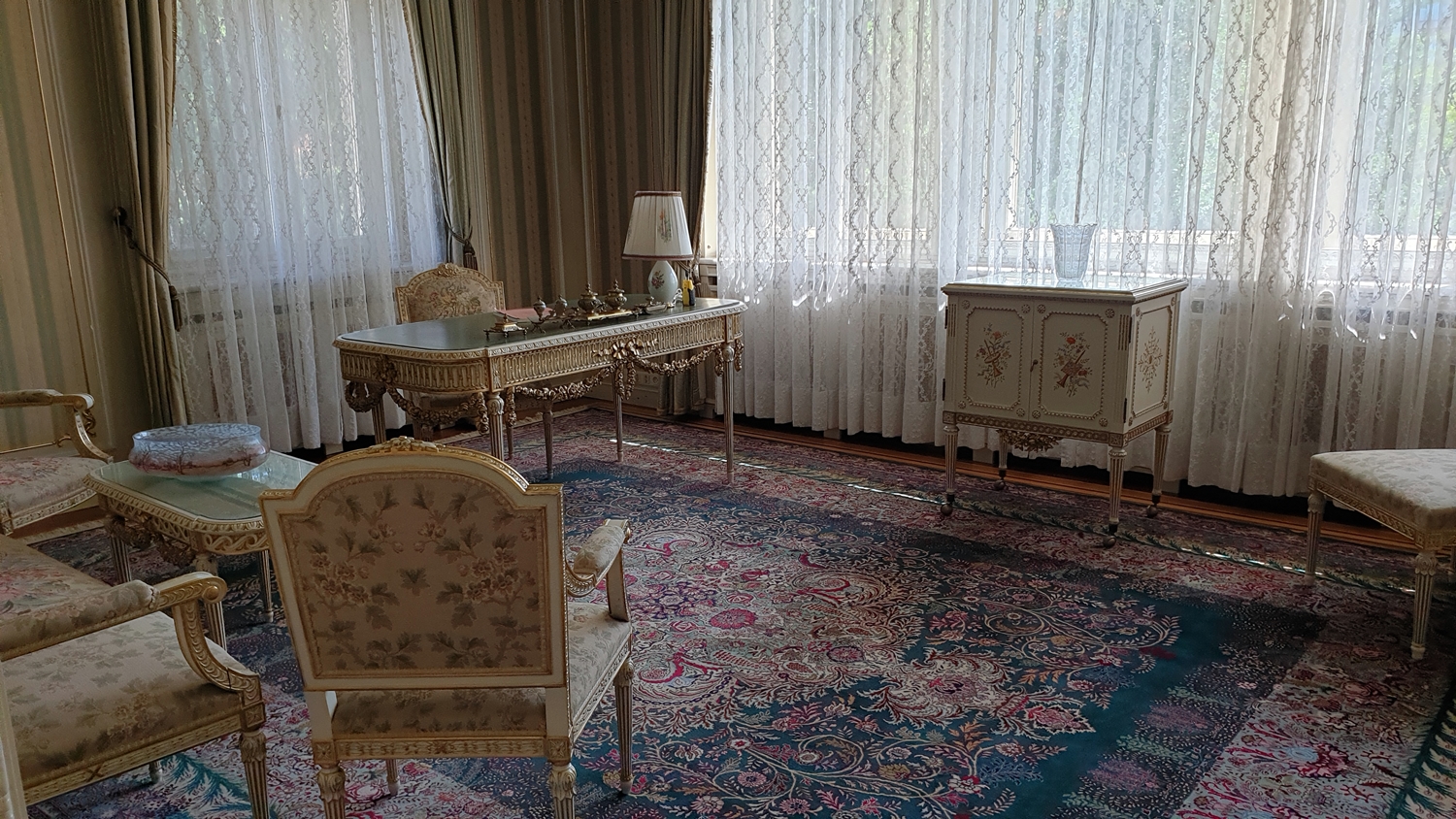
The interior is beautiful, very beautiful even, it's a matter of taste, I like more villas with a modern architecture, more open, with large windows, with a somewhat more minimalist style (the style of the Ceaușescu House is Ludovic 14th, which is very busy), but for the 80s I'm sure it was something extraordinary.
The mosaic, on the other hand, is Italian. None of the sculptures are original, they are all copies. The flooring is walnut and mahogany. The fireplaces you'll see during your visit are not functional, just decorative. They have always been so, heating was done by radiators with the help of a central heating plant.
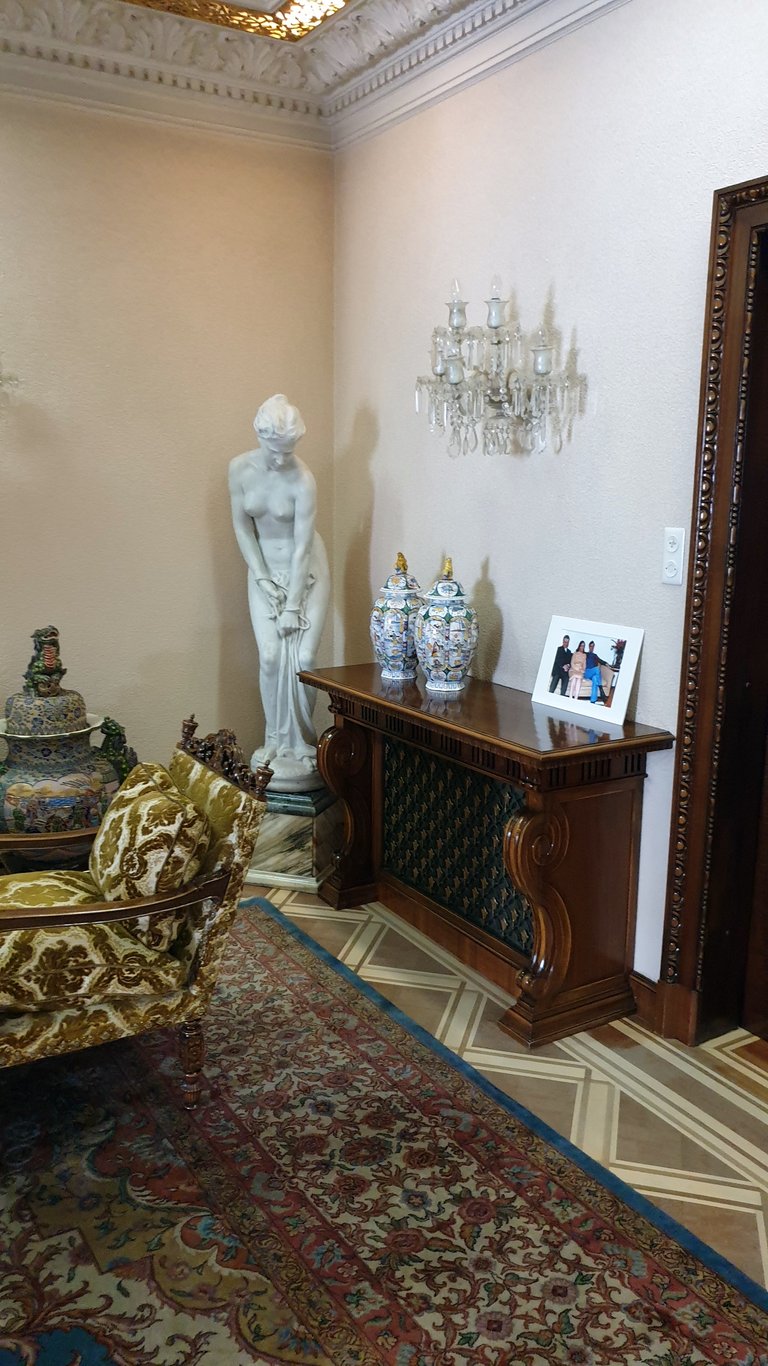
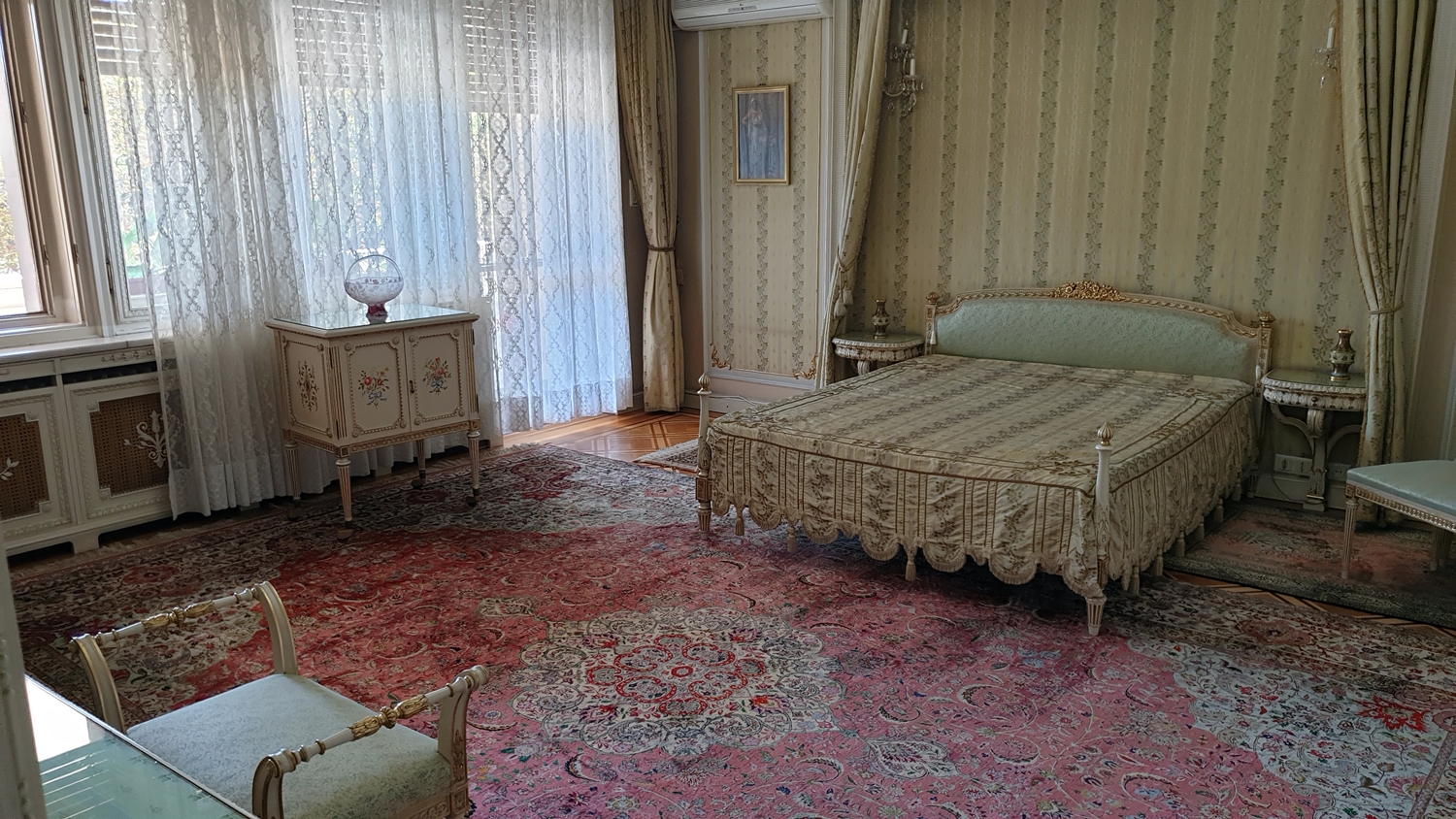
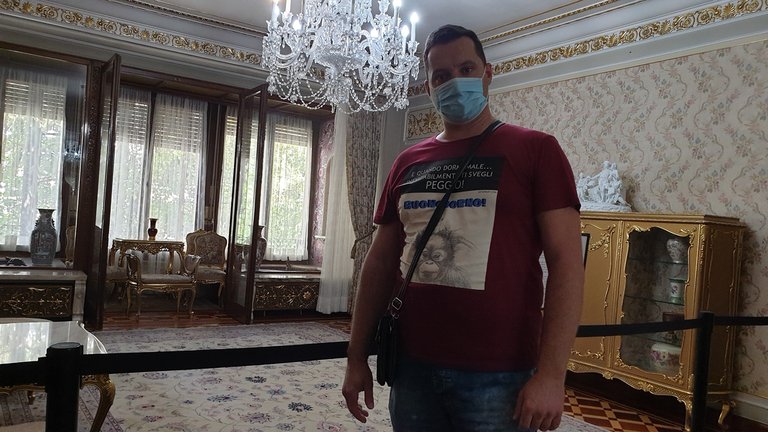
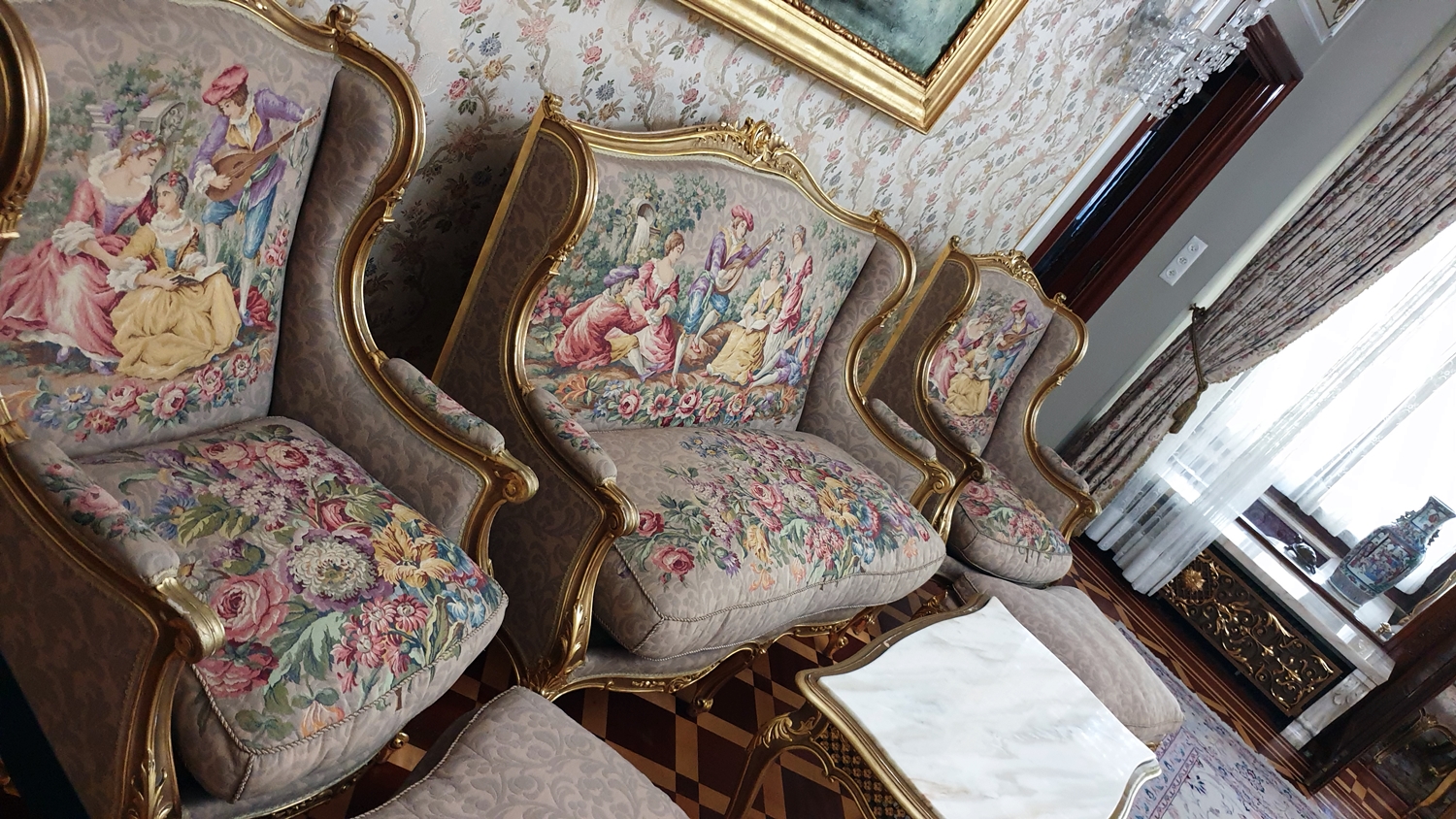
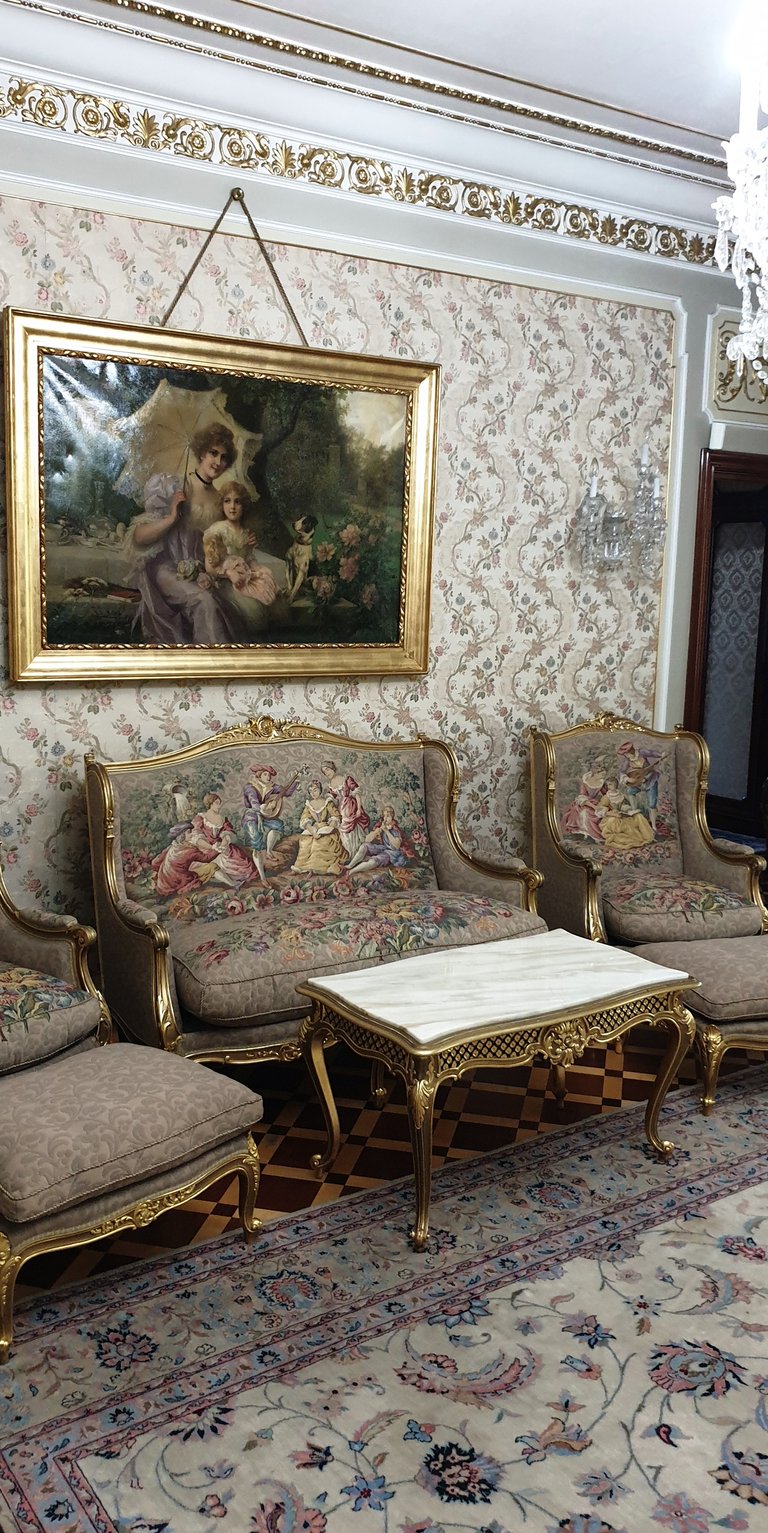
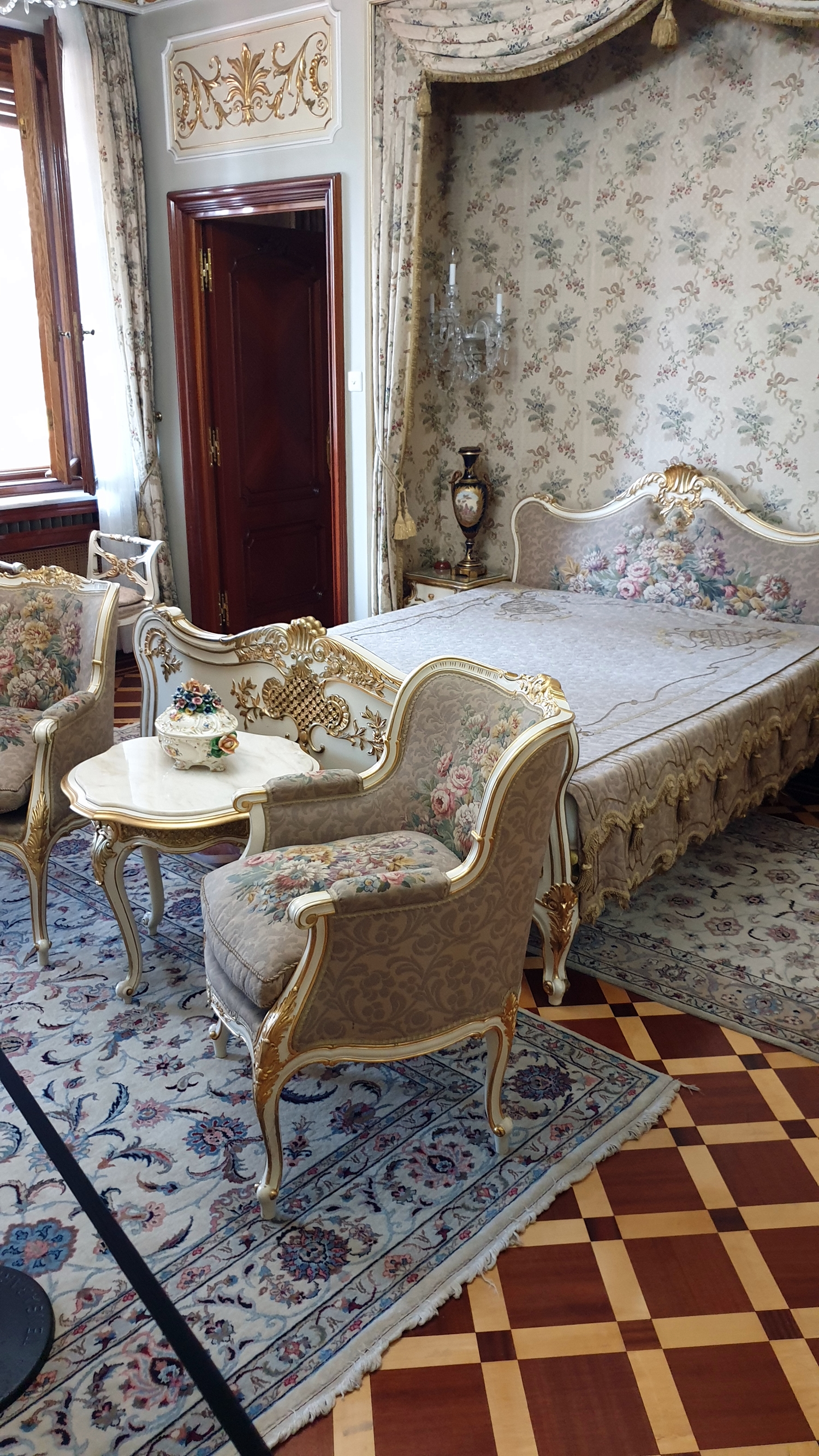
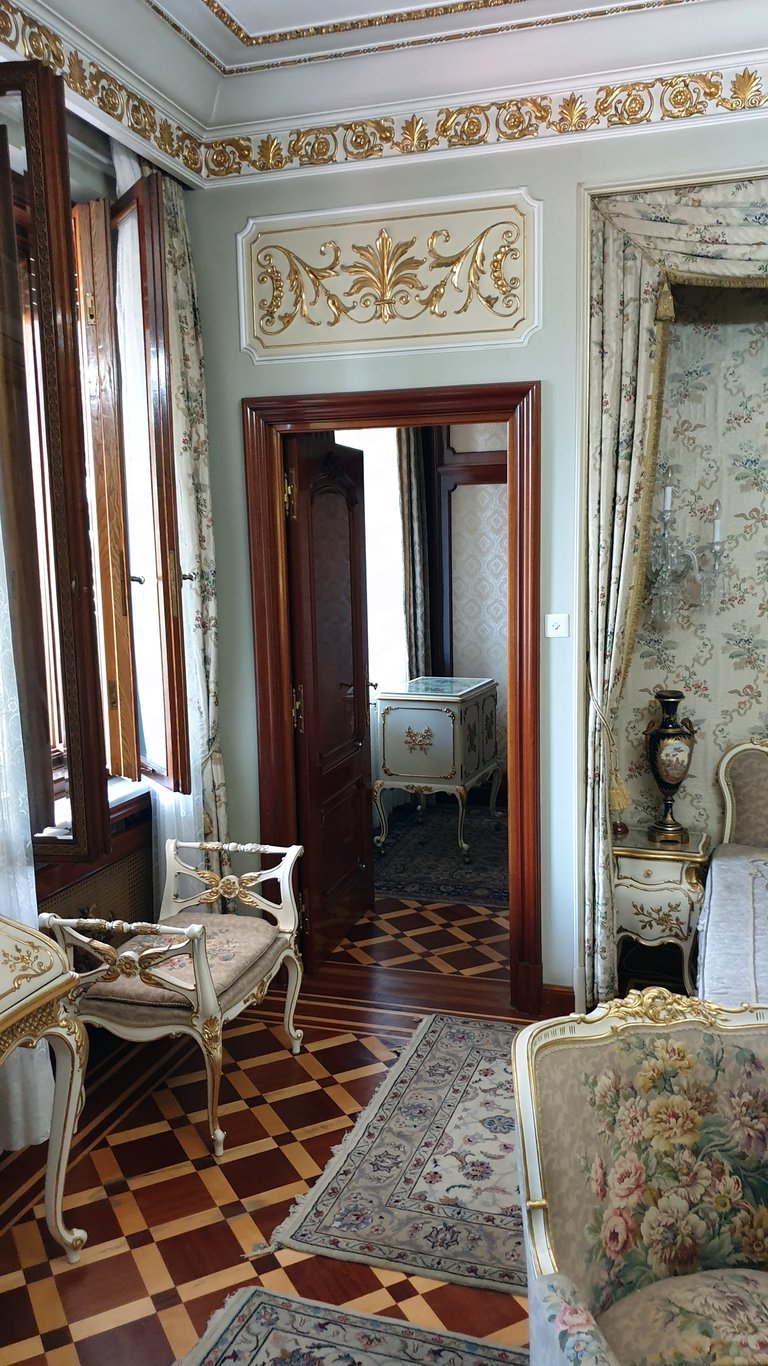
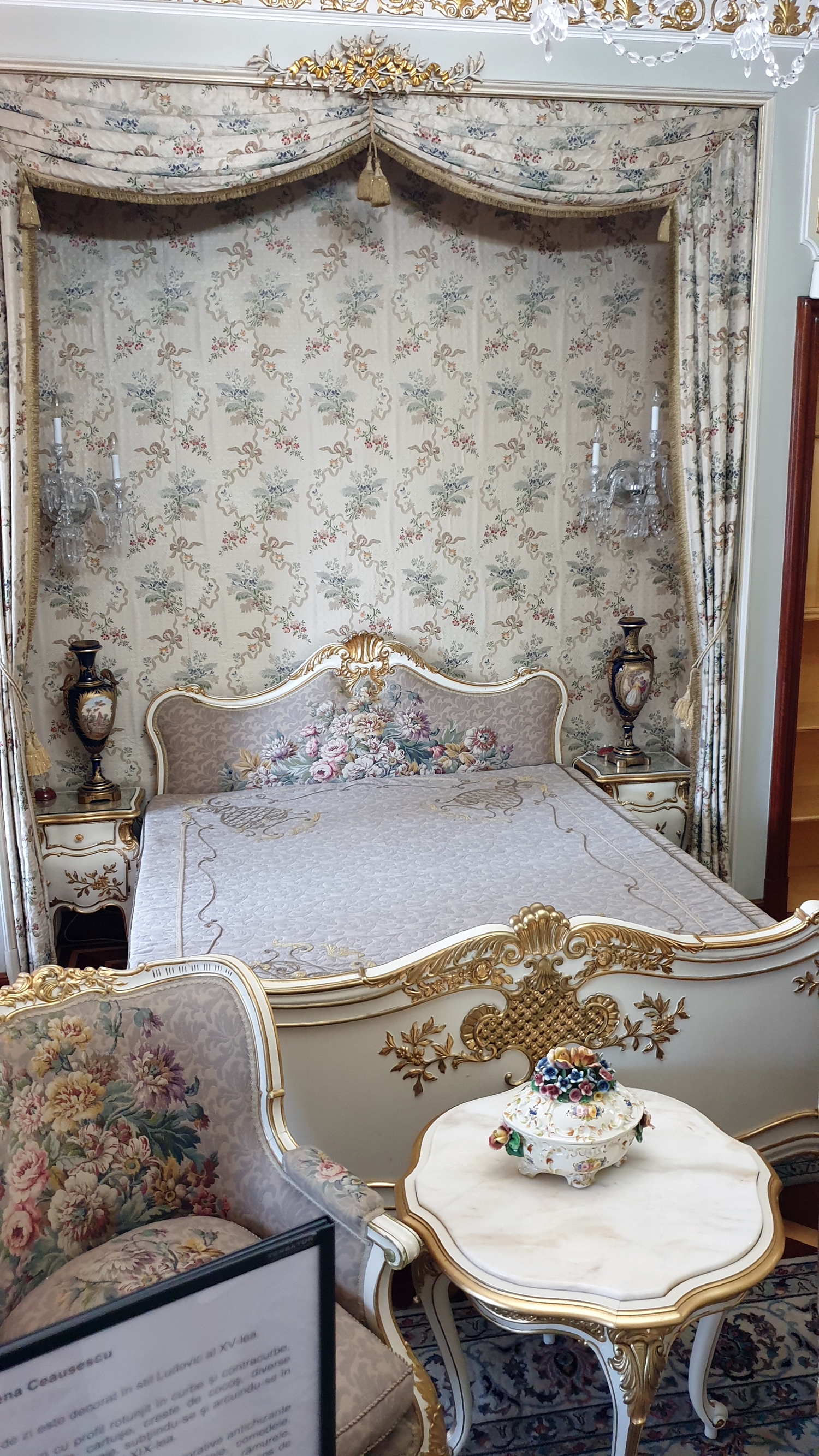
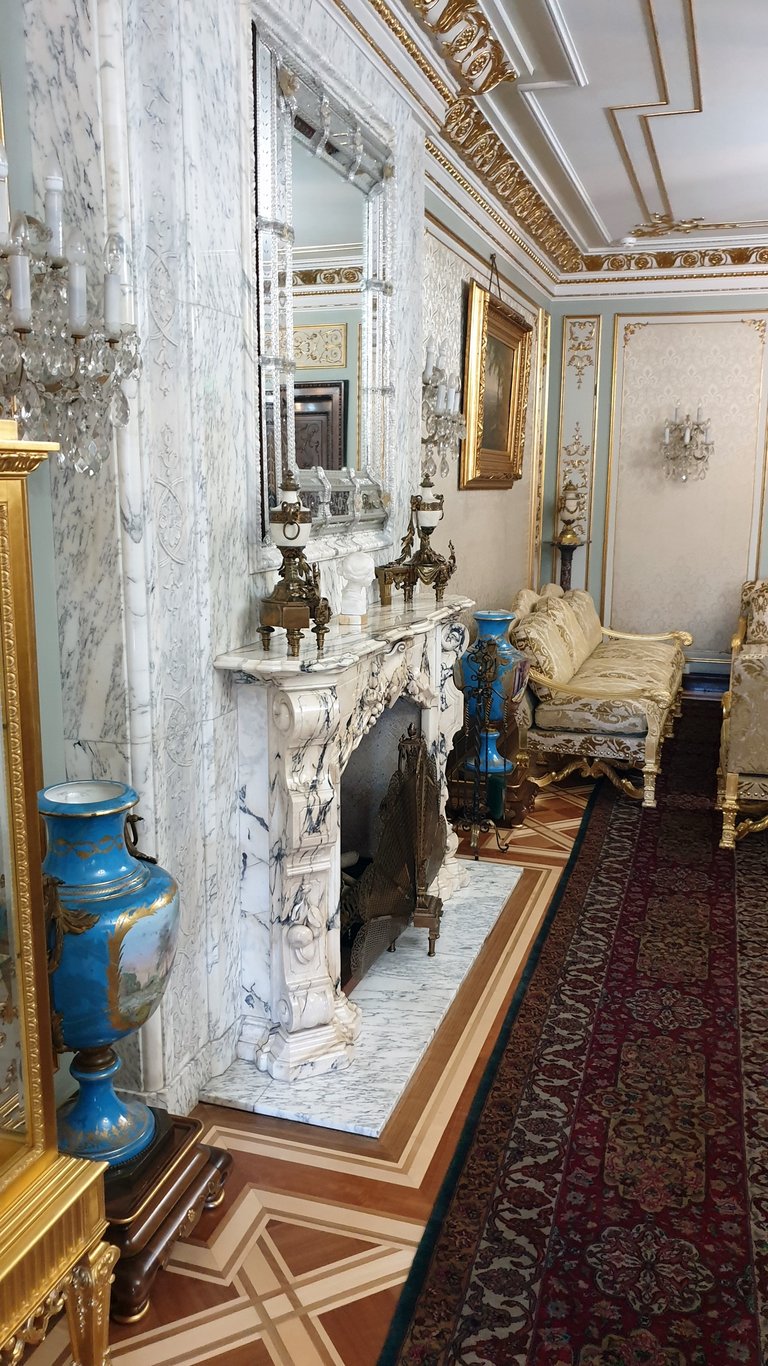
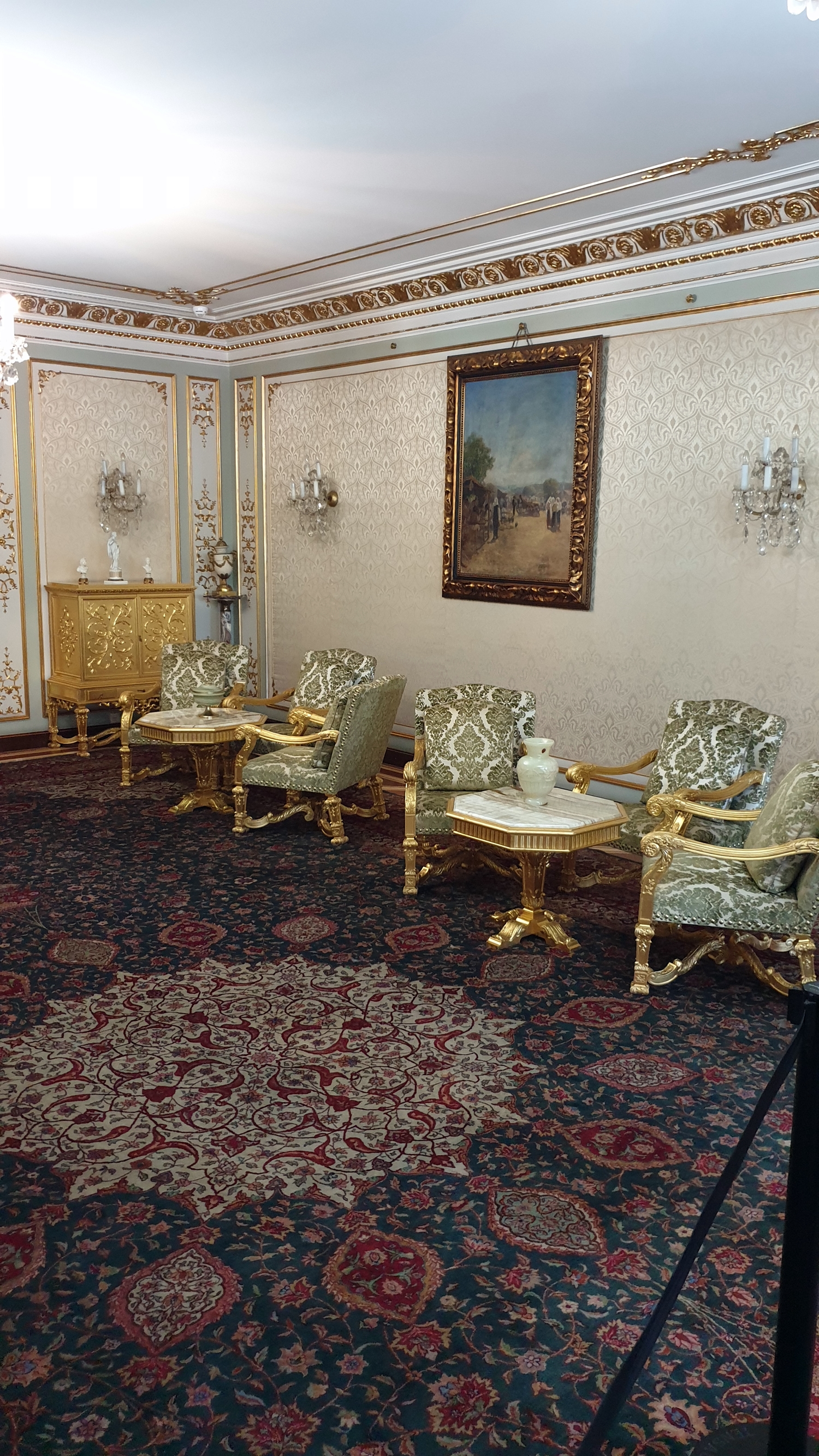
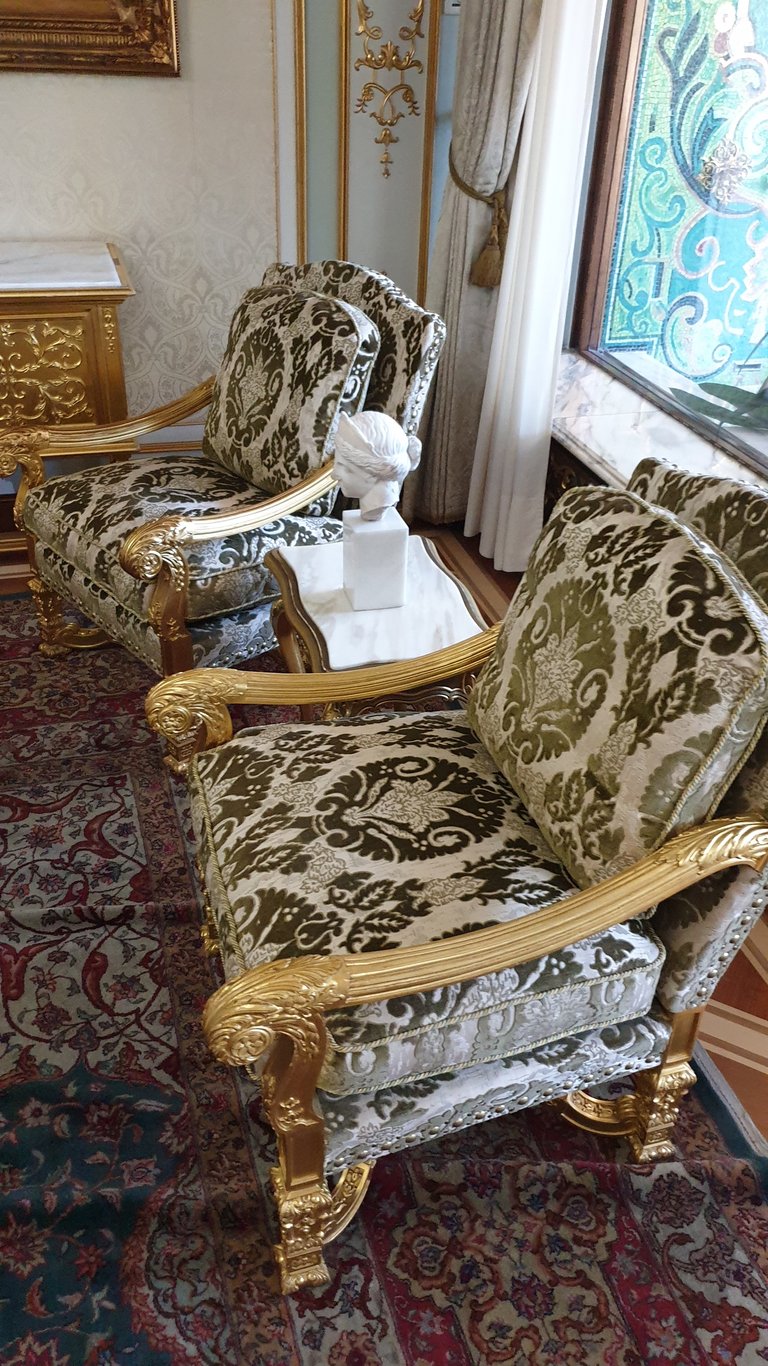

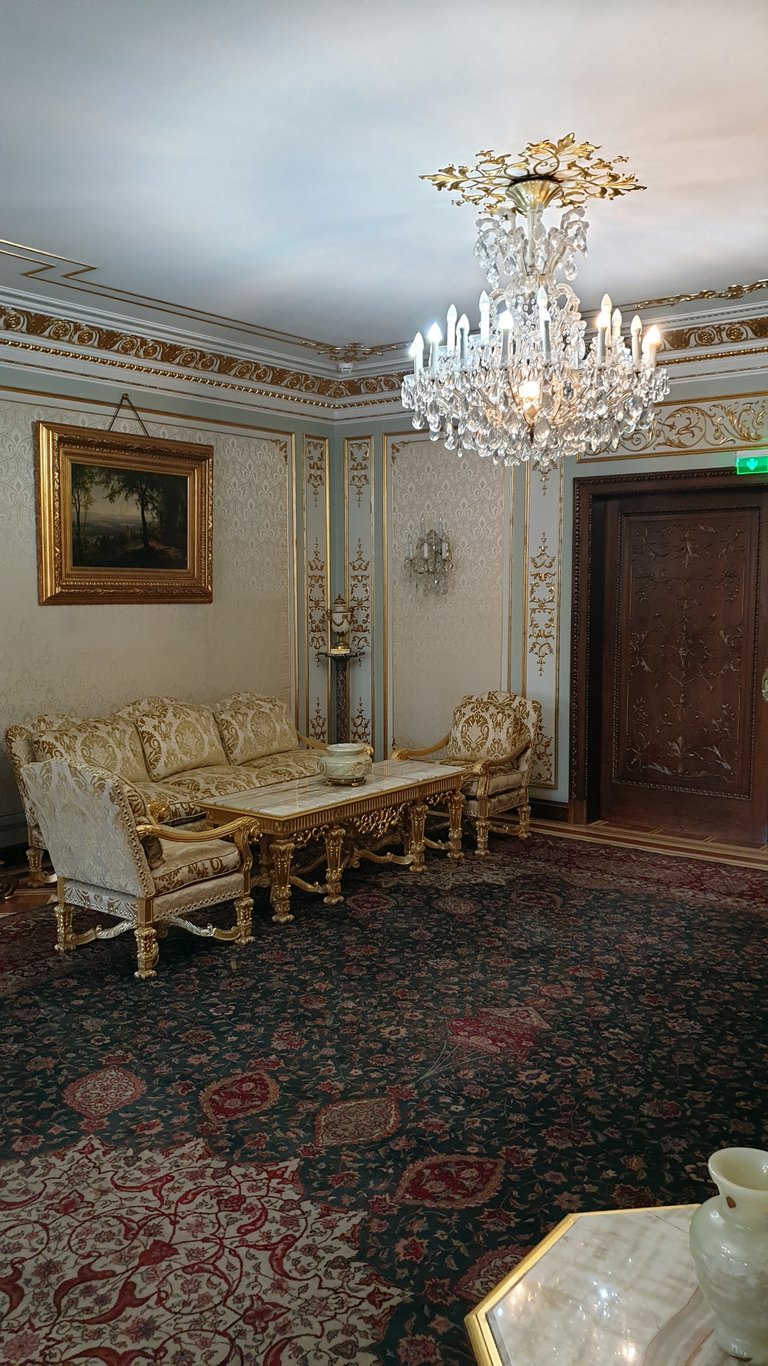
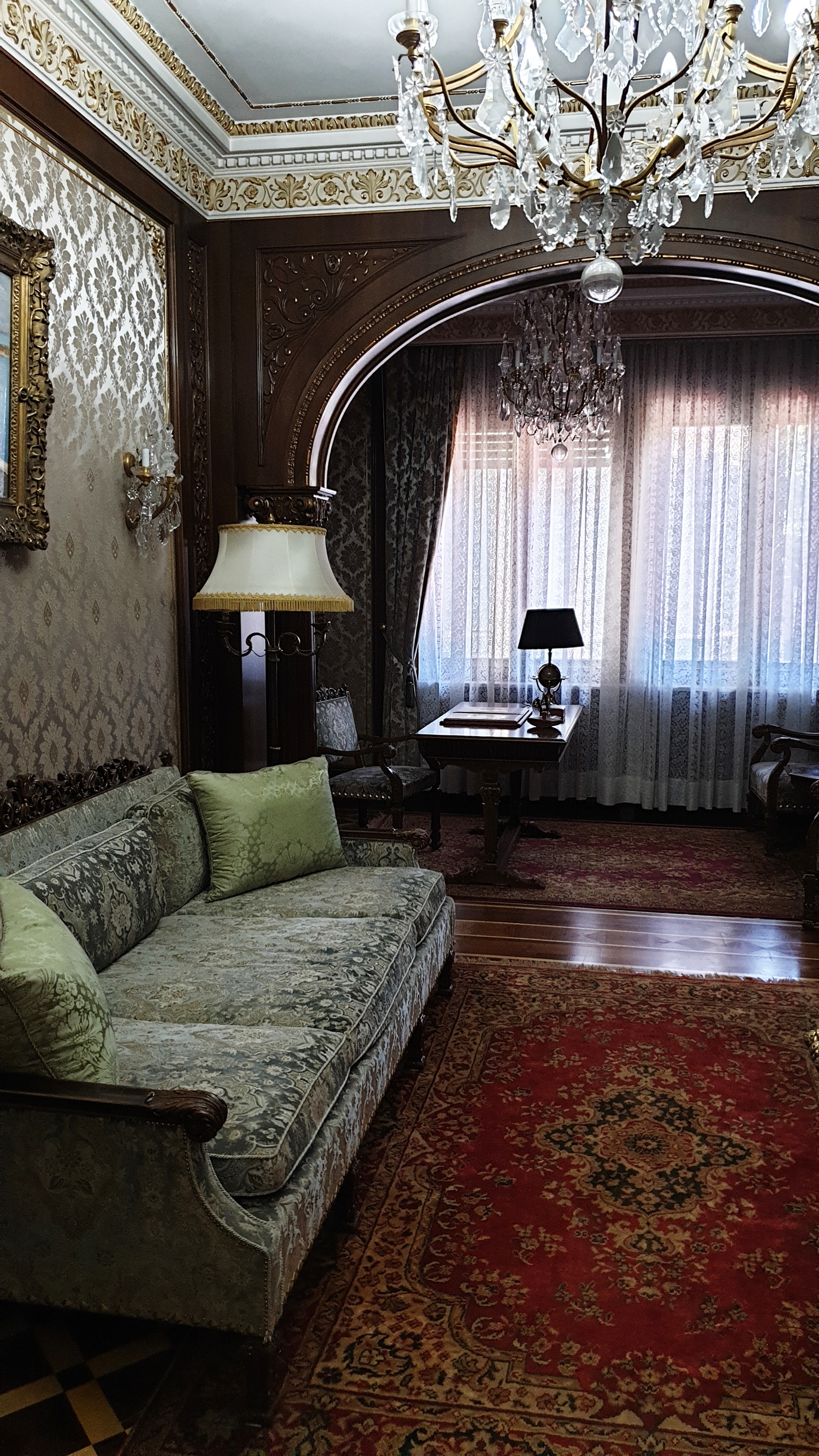
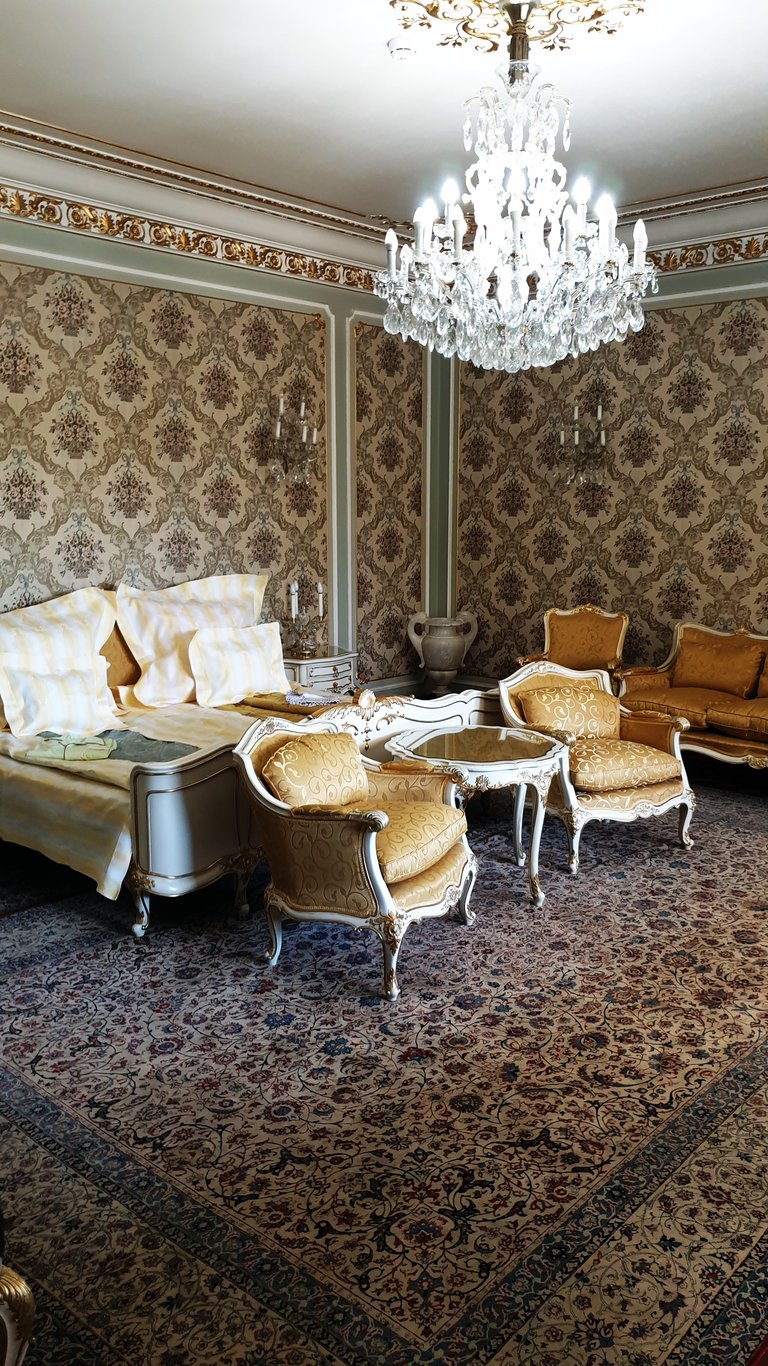
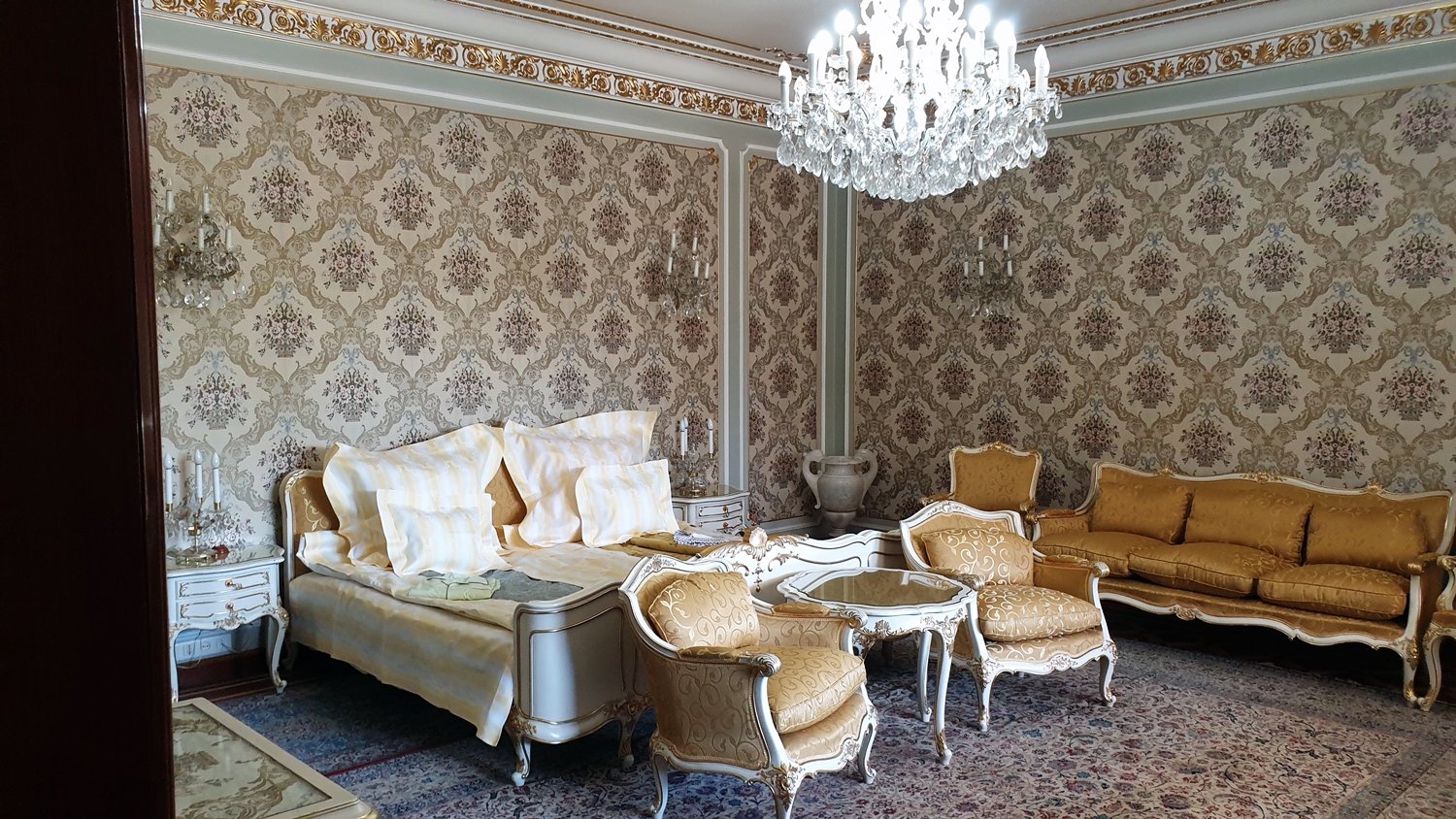
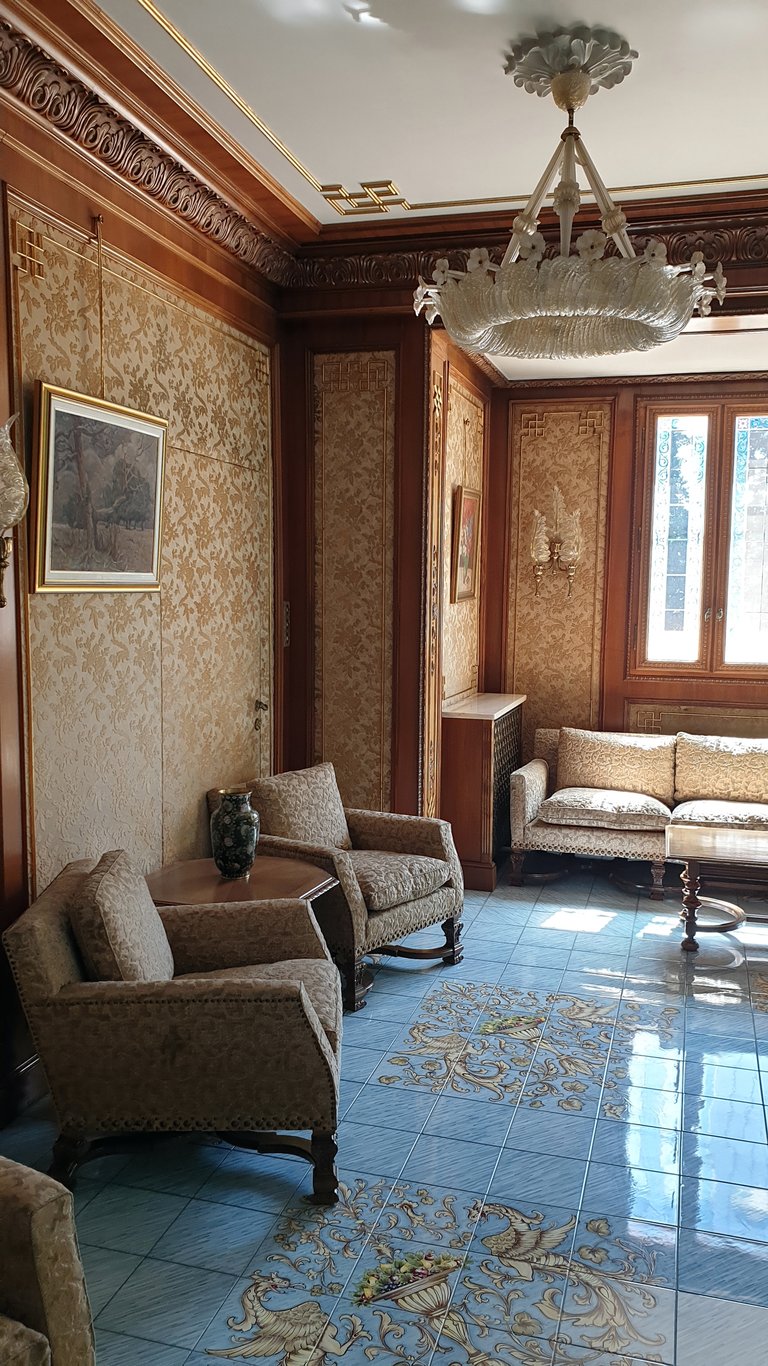
In the picture you can see Ceaușescu's wardrobe, the clothes are those actually worn by the husbands.
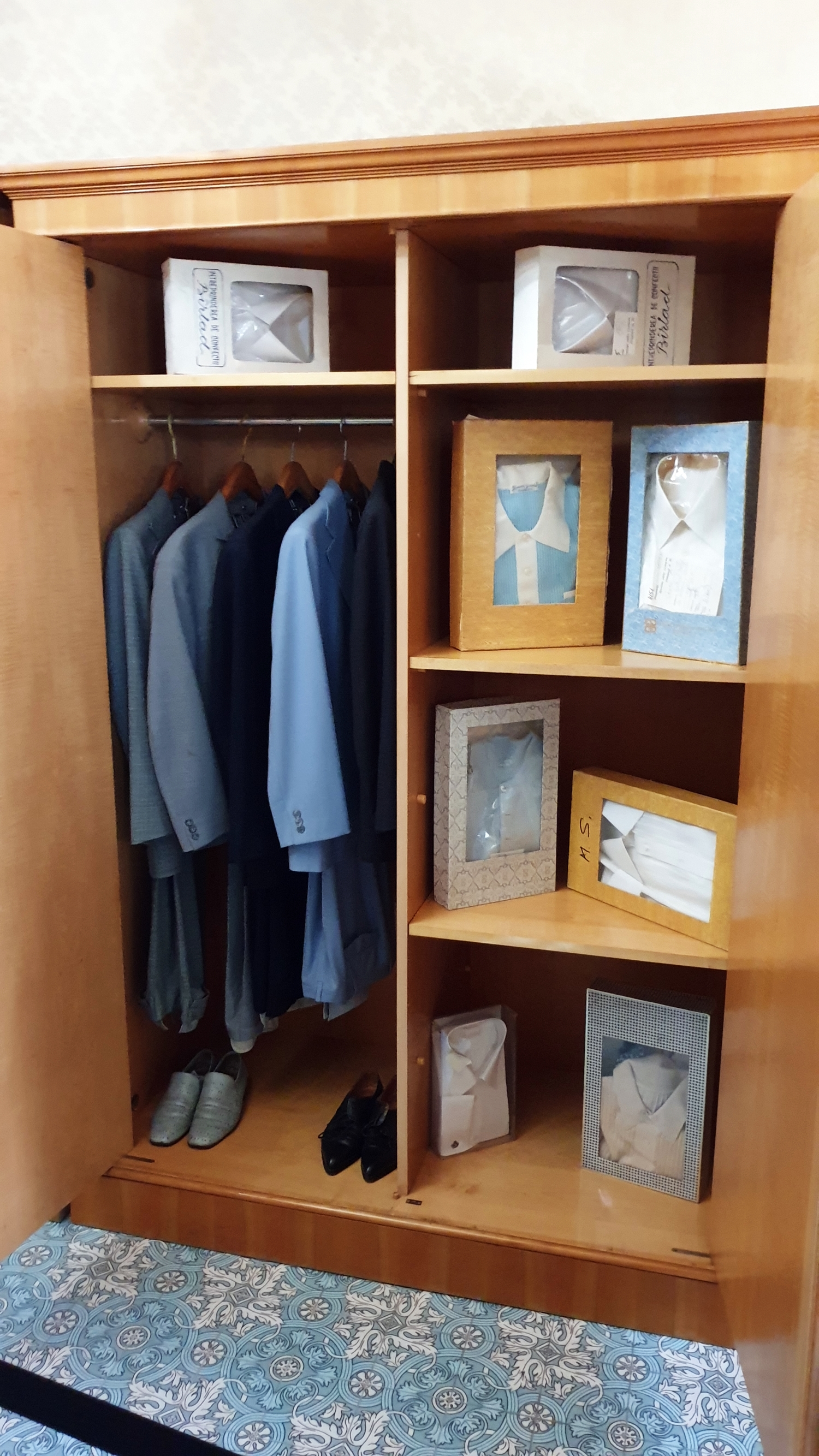
If you meet peacocks, know that they are the descendants of those that Ceaușescu had. He was once in Japan, liked peacocks and imported some, plus some of the mosaics in his house depict peacocks.
When we visited the palace, we actually met these peacocks, they were gorgeous.
No more than five people were allowed in the house at the same time, apart from the family members: the two husbands and their three children - Valentin, Zoia and the youngest, Nicu. The latter was to take over the country from his father, at least that was Nicolae Ceausescu's wish.
Two Labradors were specially trained to guard the couple. Only the couple fed them, no one else was allowed to do so.

Today 50 rooms are open to the public, which we will visit together. These include a cinema, a relaxation centre and the two gardens - summer and winter.
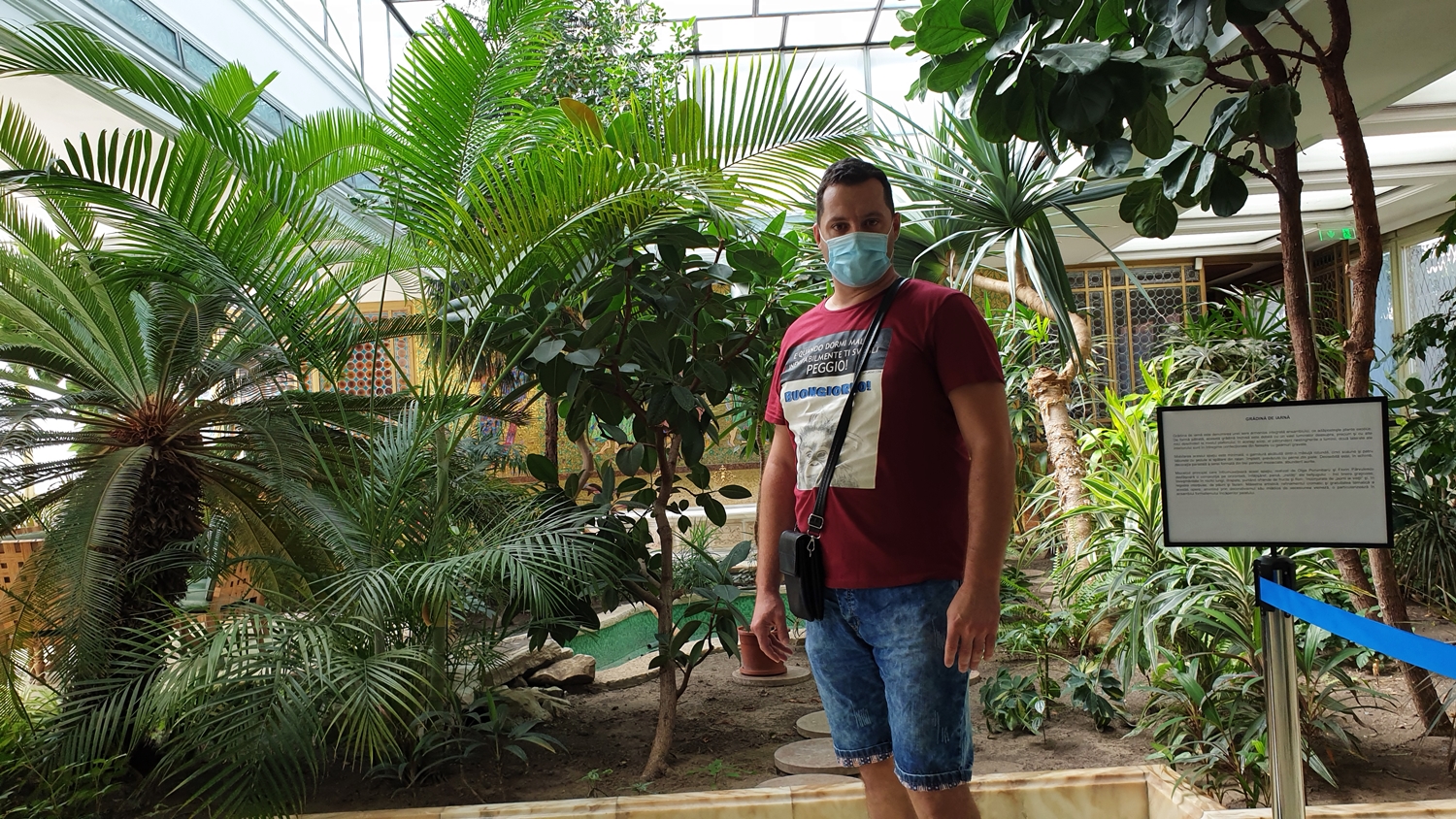
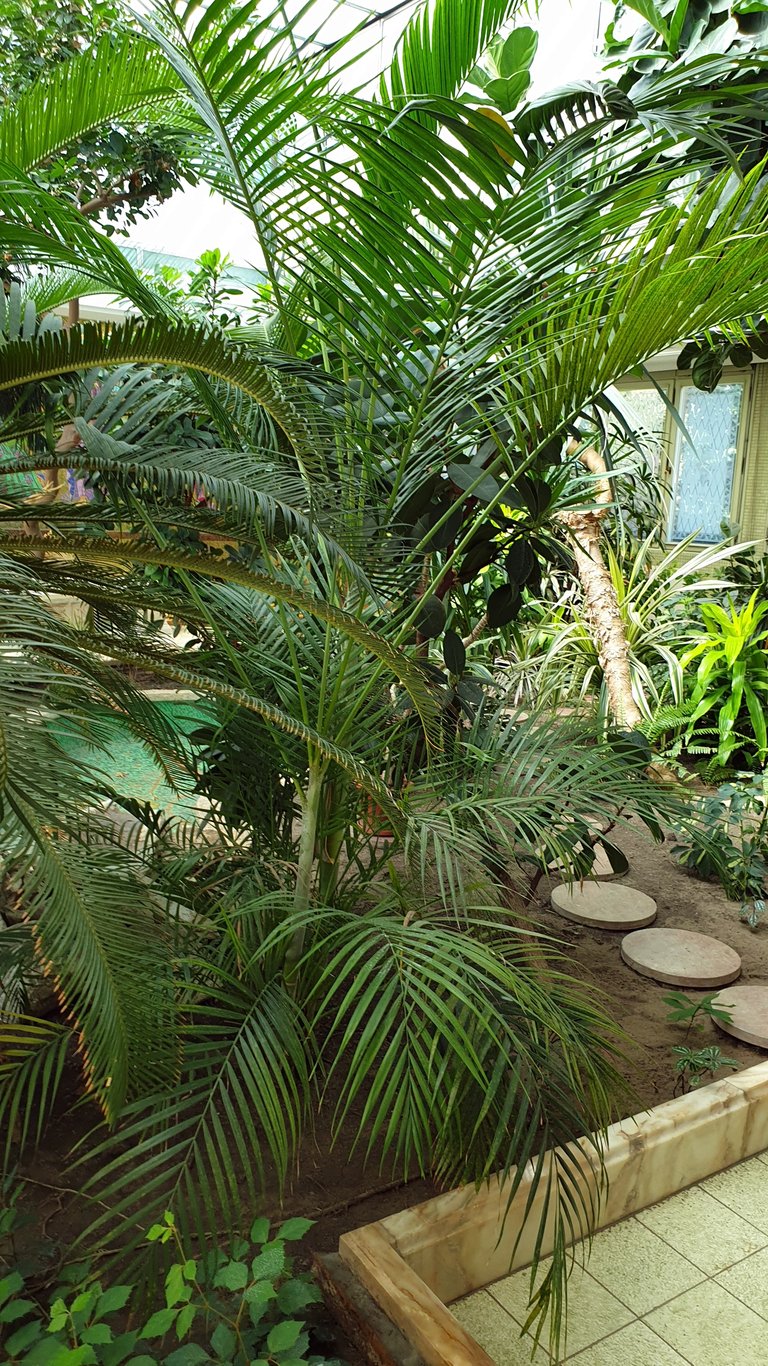
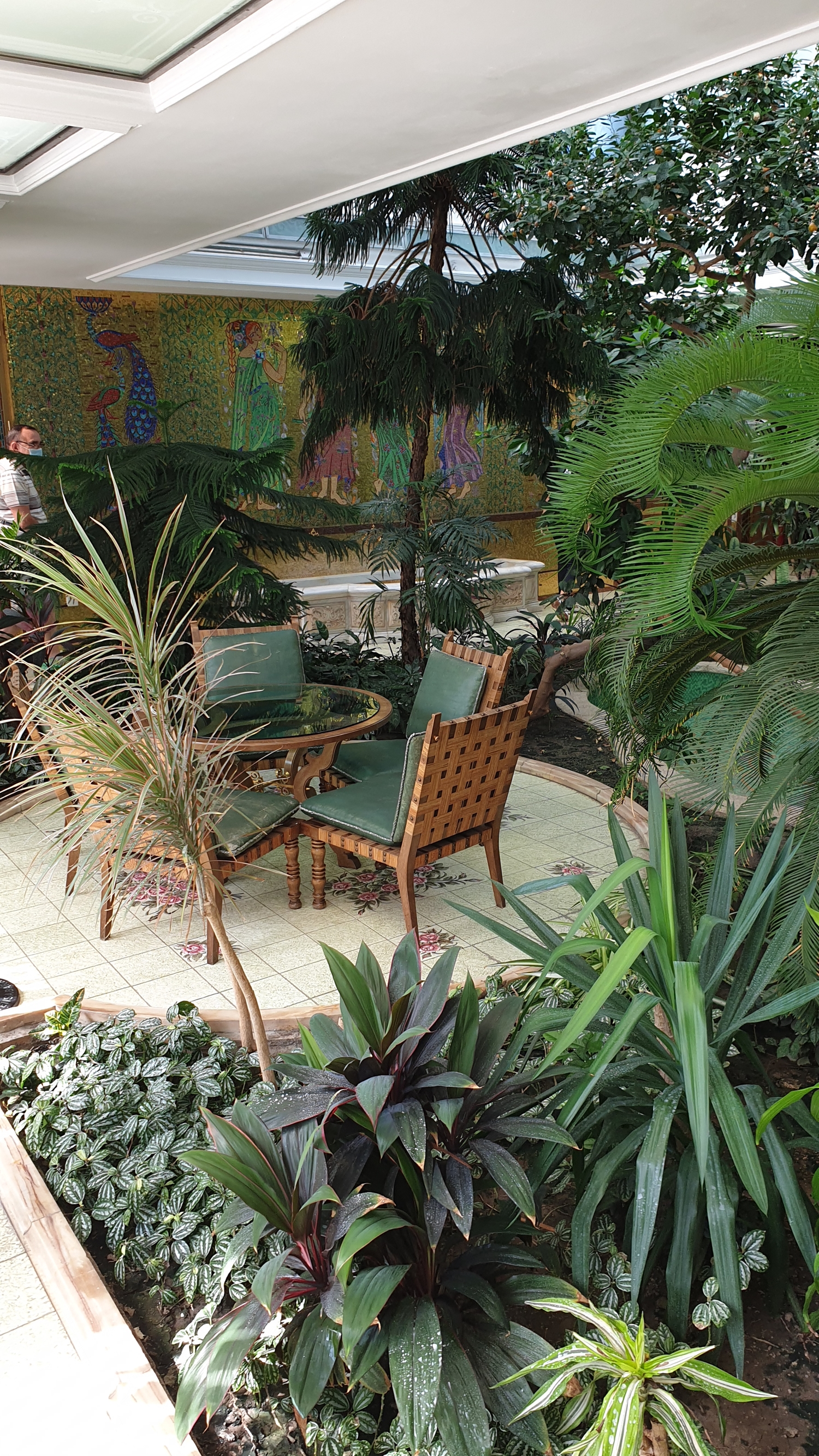
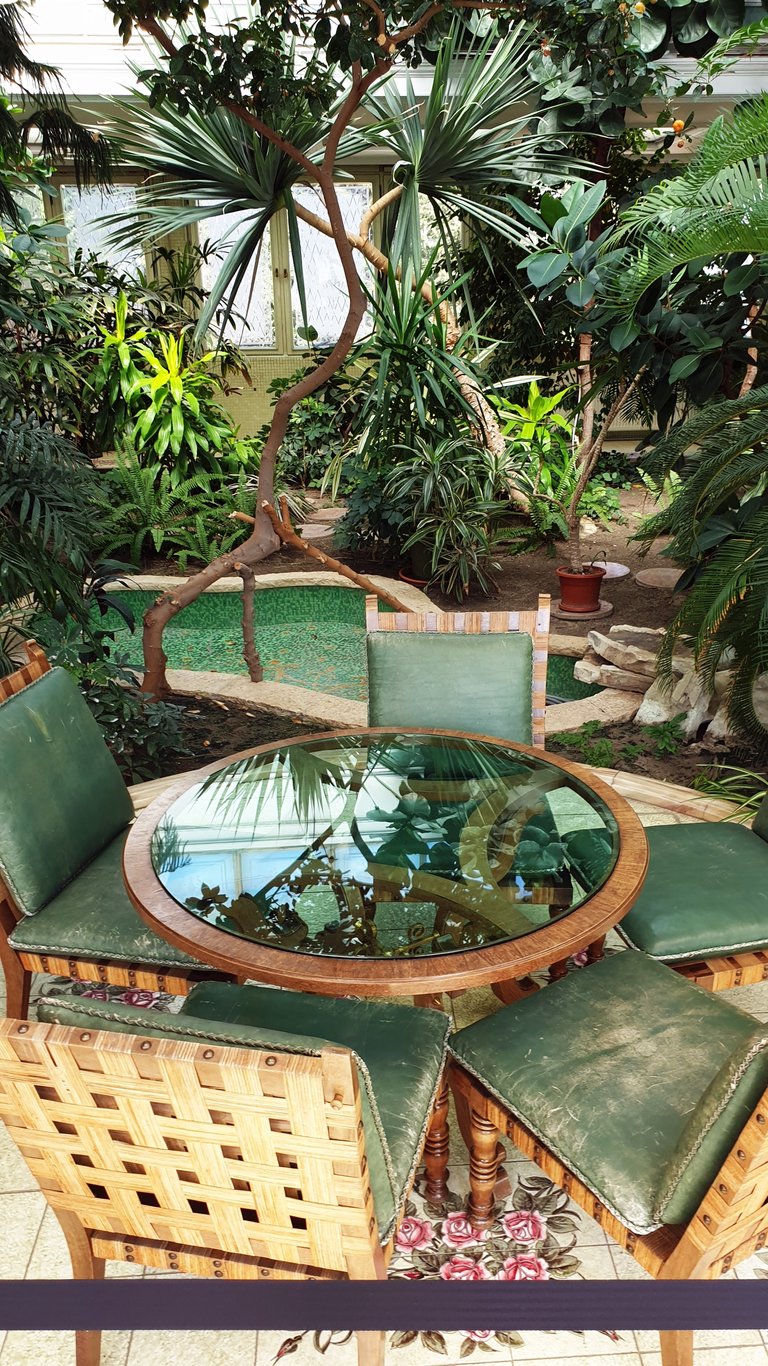
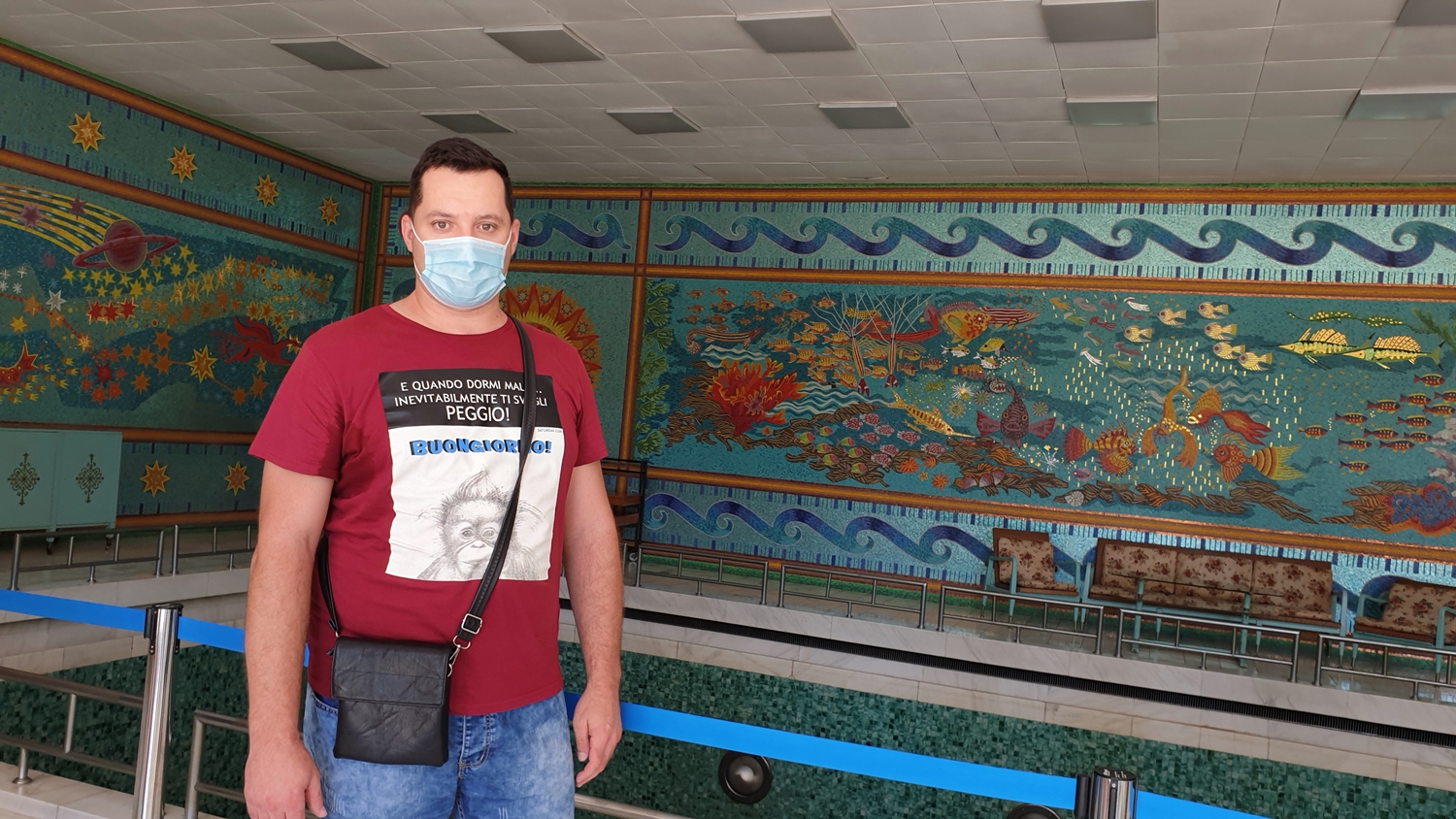
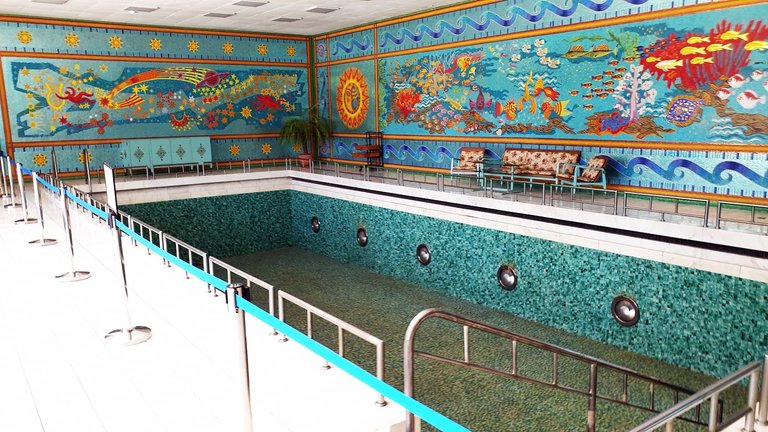
At a time when people queued endlessly for a loaf of bread, the Ceausescu's owned a palace with gold-plated baths.
At that time I was 4-5 years old and did not feel the hardships of those times.
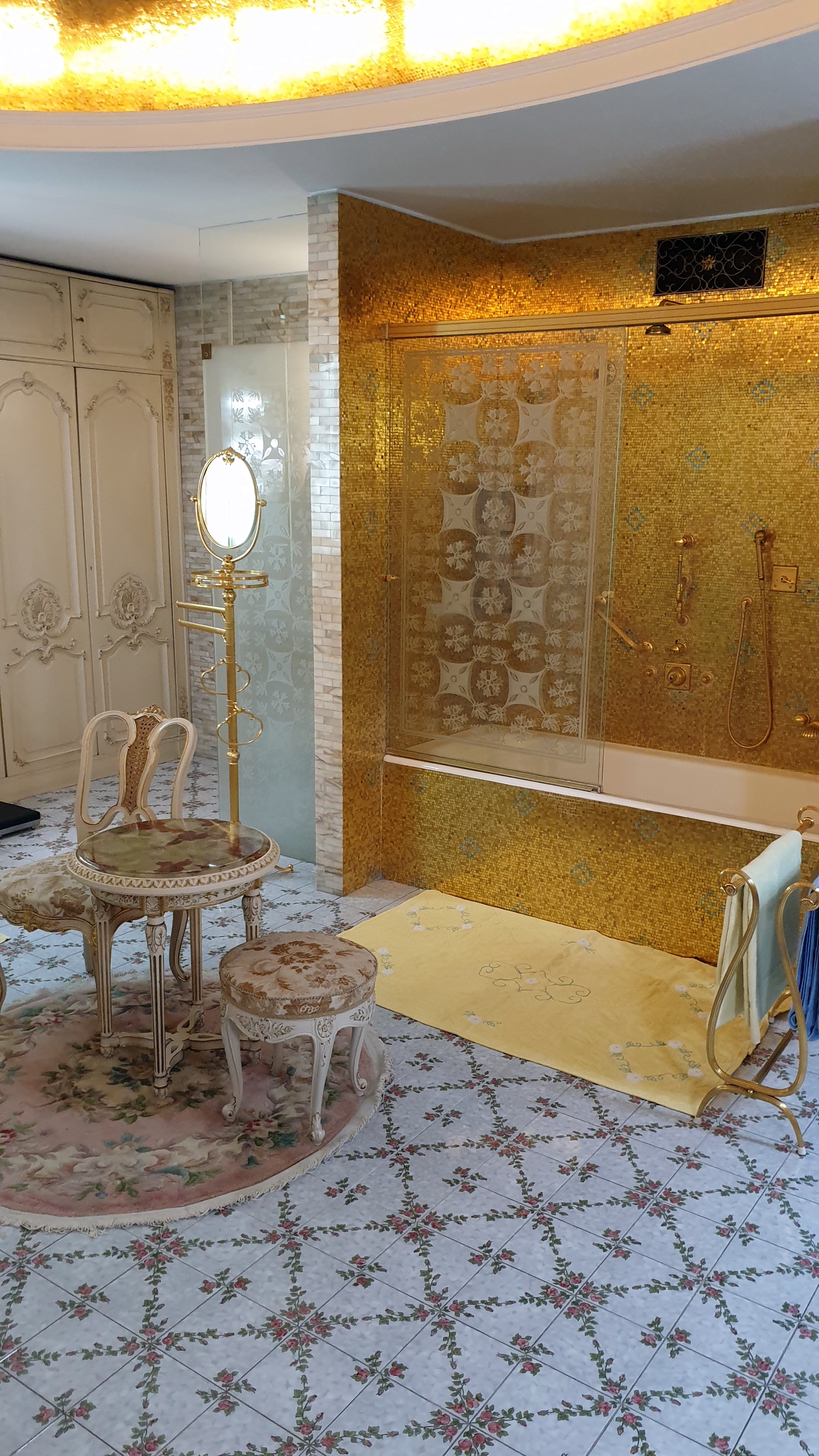
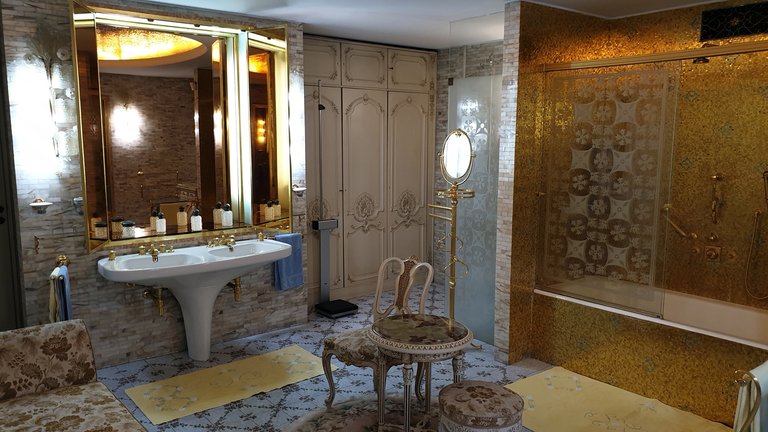
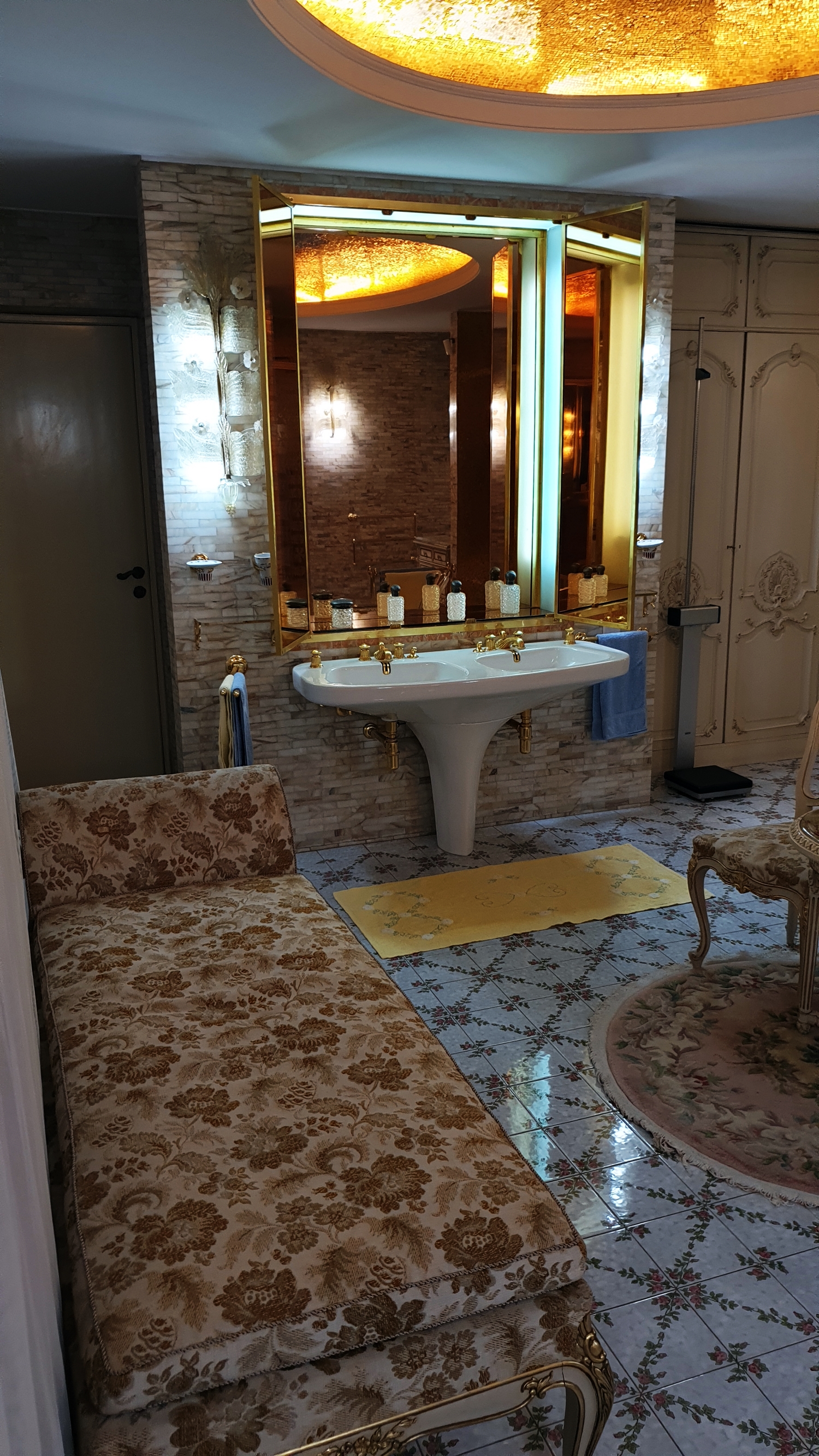
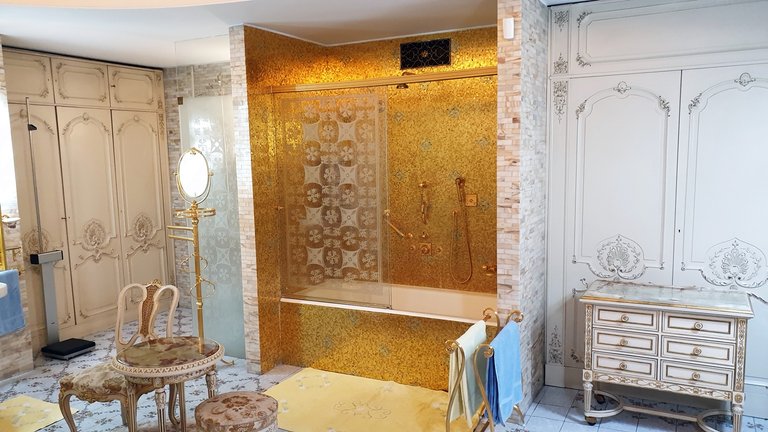

What is still very interesting is that one of the maids that the Ceaușescu family had at that time is still in charge of the care and maintenance of this palace.
You can imagine that she is of a venerable age, but still active.
She is one of the few people who know every inch of this palace, as it has been fitted with bulletproof glass, the entire palace area communicates through secret tunnels with various underground stations and many other hiding places.
At the end of the tour you can have a coffee inside the palace courtyard in a green area.
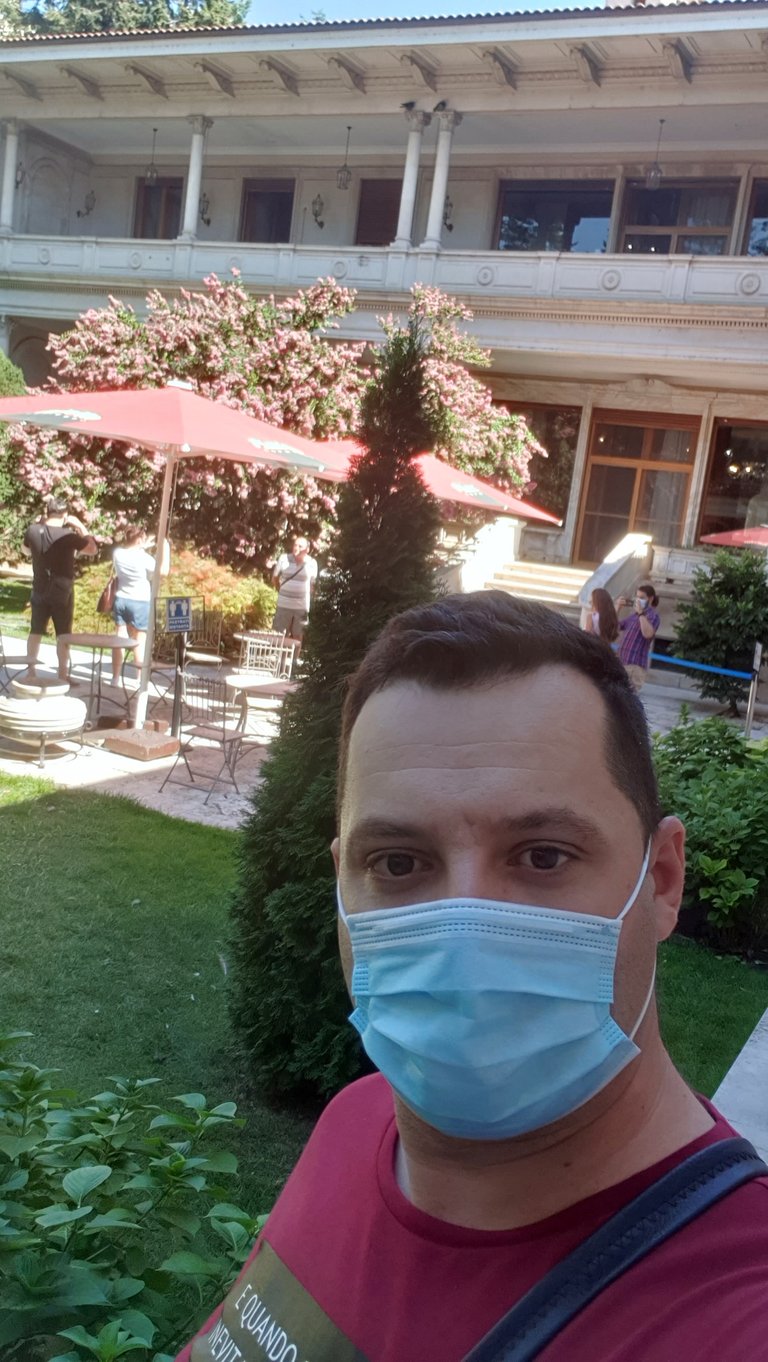
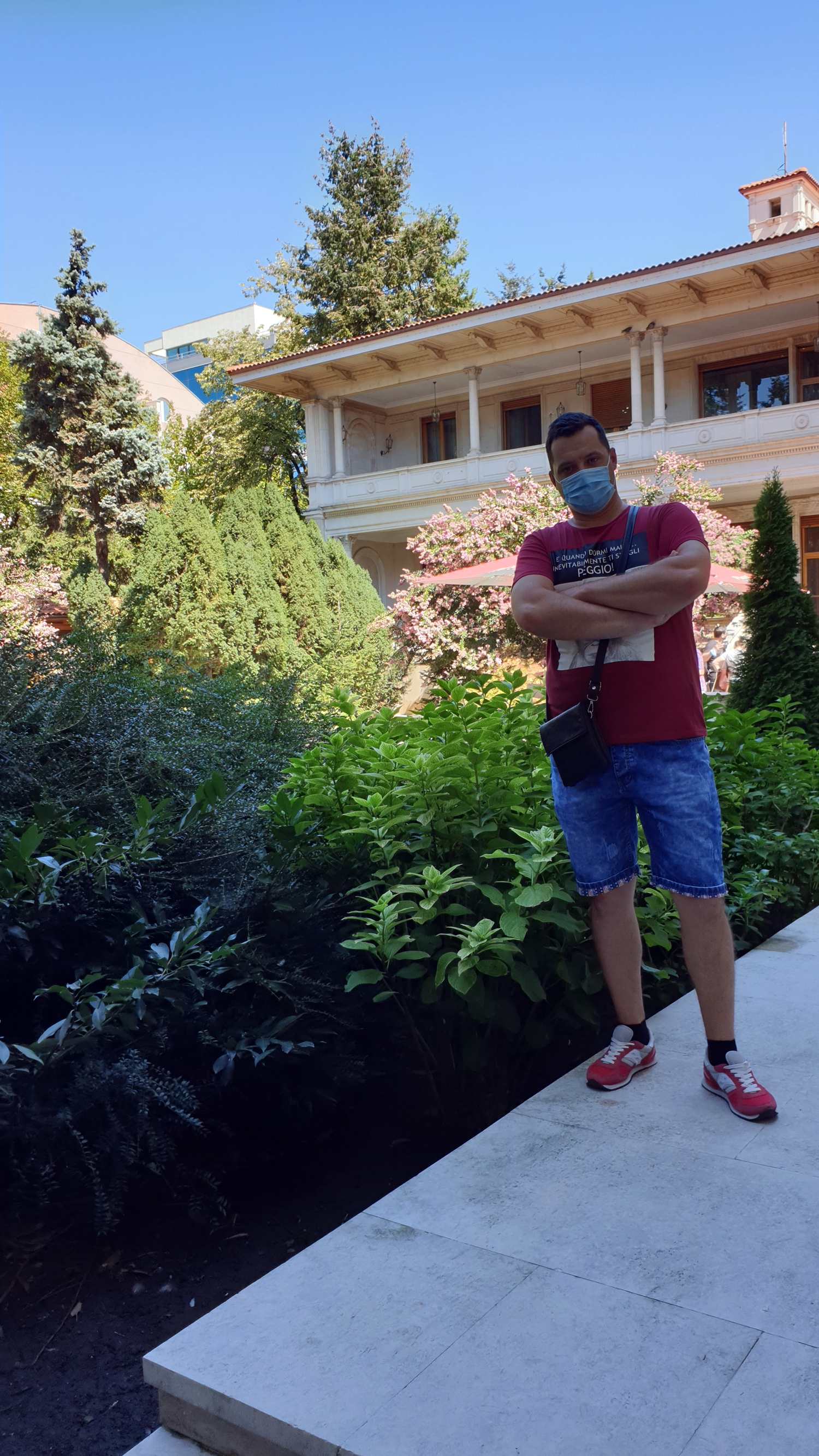
If you have any questions, please ask.
Yes, photography is allowed, but no flash.
To conclude
The main reason you should visit the house is the decorations. The guide has done a good job of presenting them all: crystal chandeliers made in Mediaș, wooden panelling produced somewhere near Obor, Romanian marble, Romanian glass, etc. In some places you'll find Murano glass, in others all sorts of objects received by Ceaușescu from other world leaders such as Kim Ir-Sen, Queen Elizabeth, the Shah of Iran.
The mosaic in all the rooms is amazing. Typically, each room has hand-laid mosaics of a different colour, grouped around decorative fountains that made the transition between the room and the large terrace. The indoor pool is also a work of art. Basically, you can see here the best of Romanian interior design in almost half a century.
Spring Palace - former residence of the Ceausescu family,
- Opening hours: Wednesday - Sunday 10.00-17.00
- Ticket price: 45 lei/9euro - standard, lasts 45 minutes and includes expert guidance.
- Ticket price: 40 lei/8euro for students or pensioners.
- Address: bd. Primăverii, nr. 50 (Aviatorilor metro station), Bucharest
Thank you for taking the time to read the contents of today's post, all images and text are my own.
Yours @triplug!
